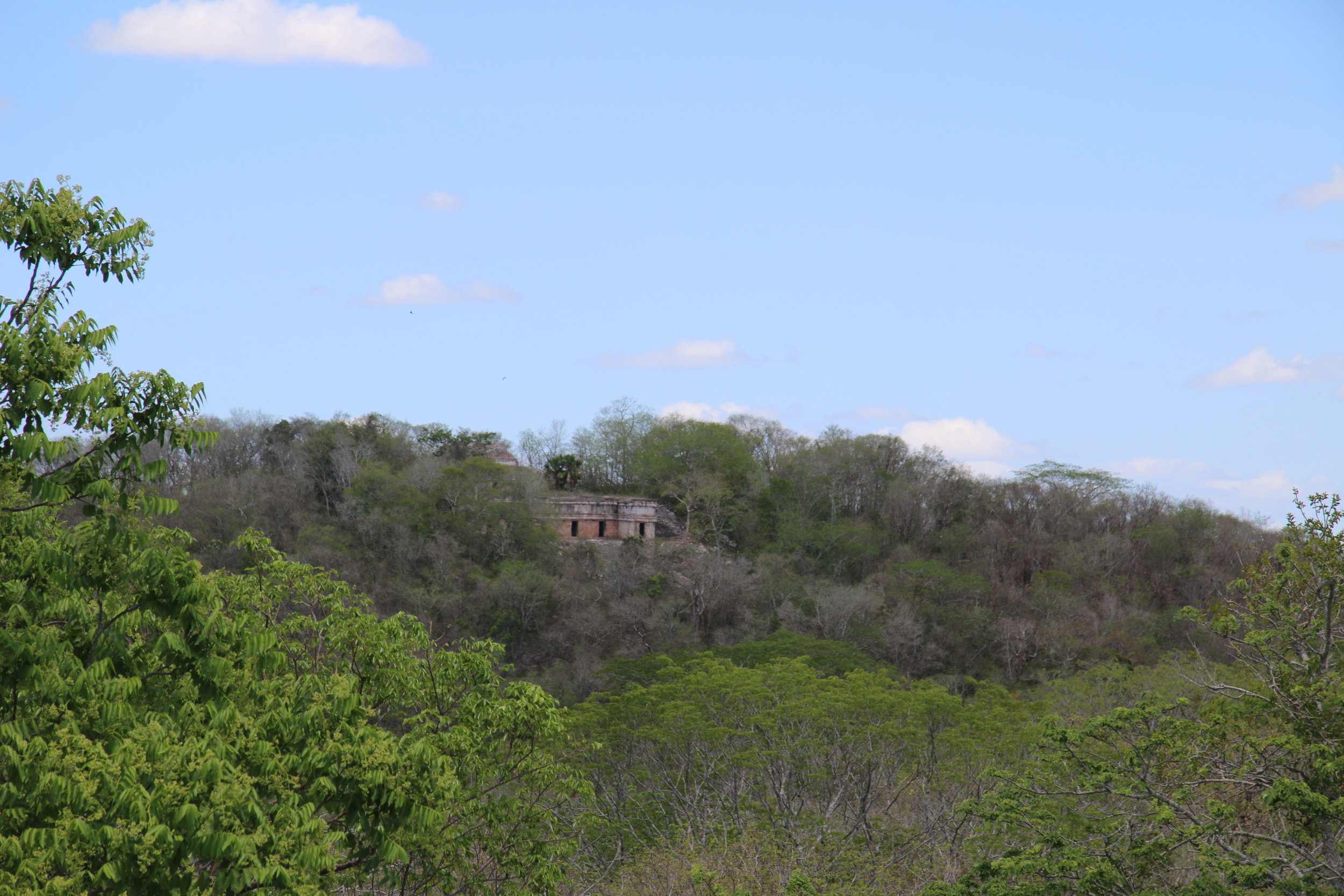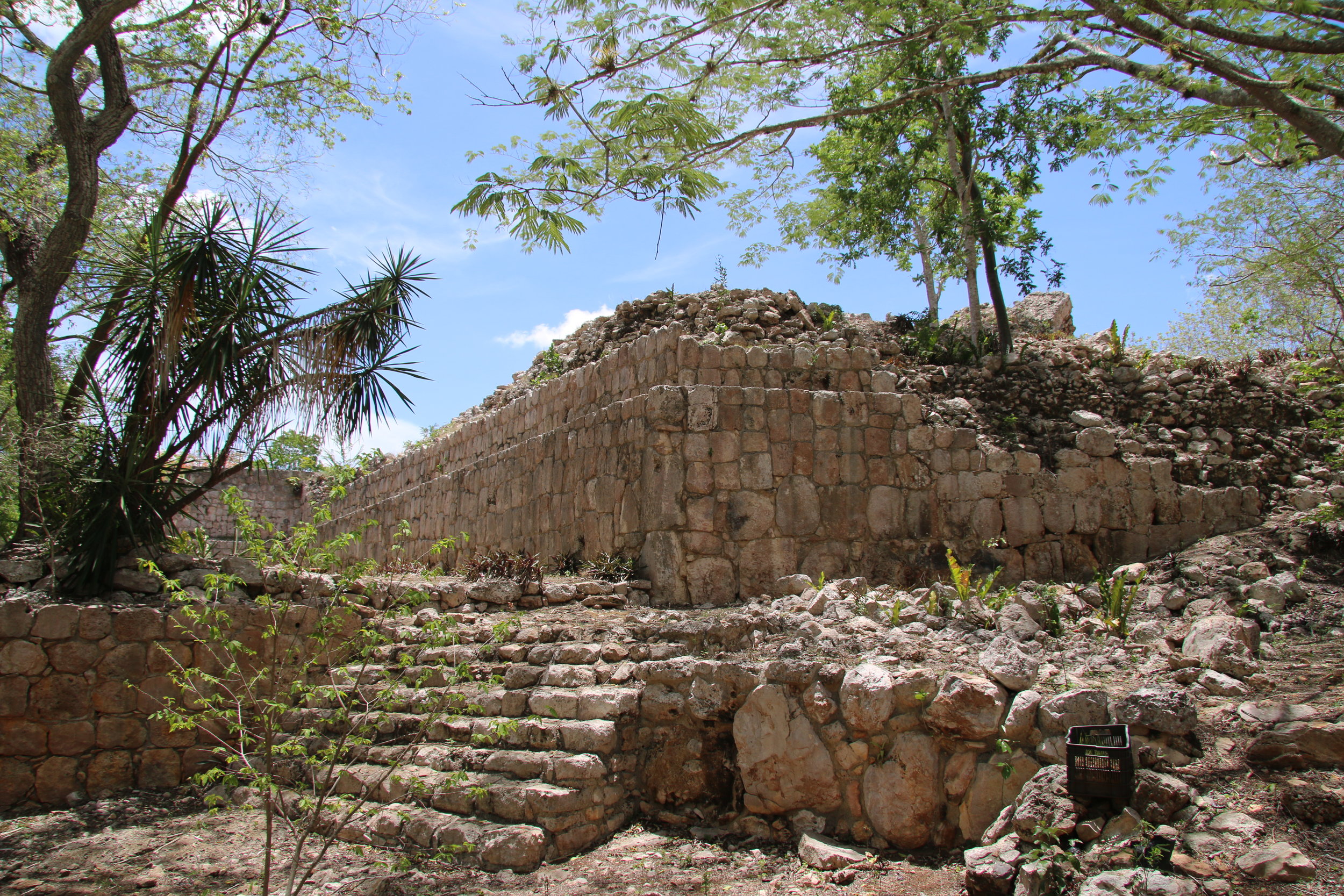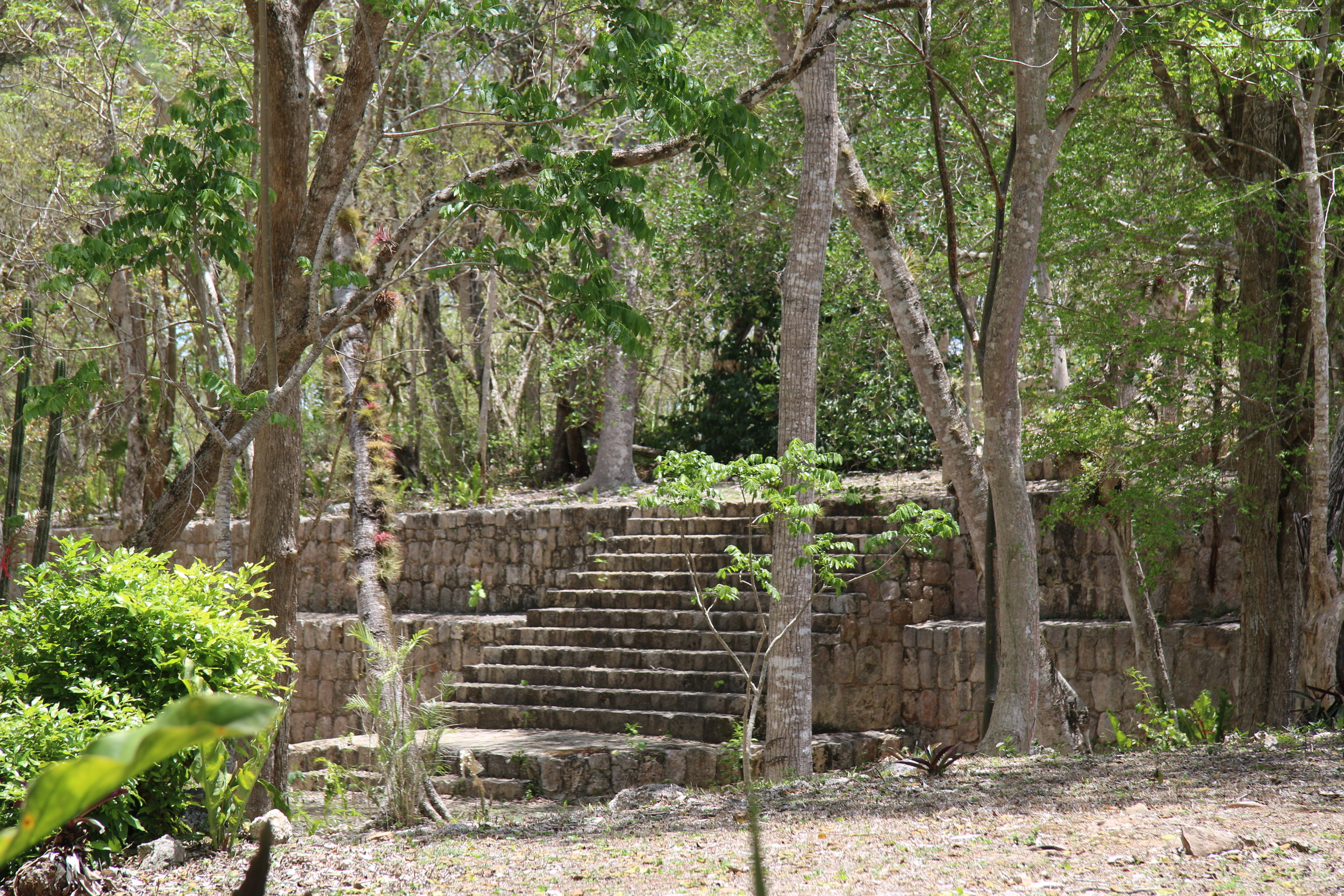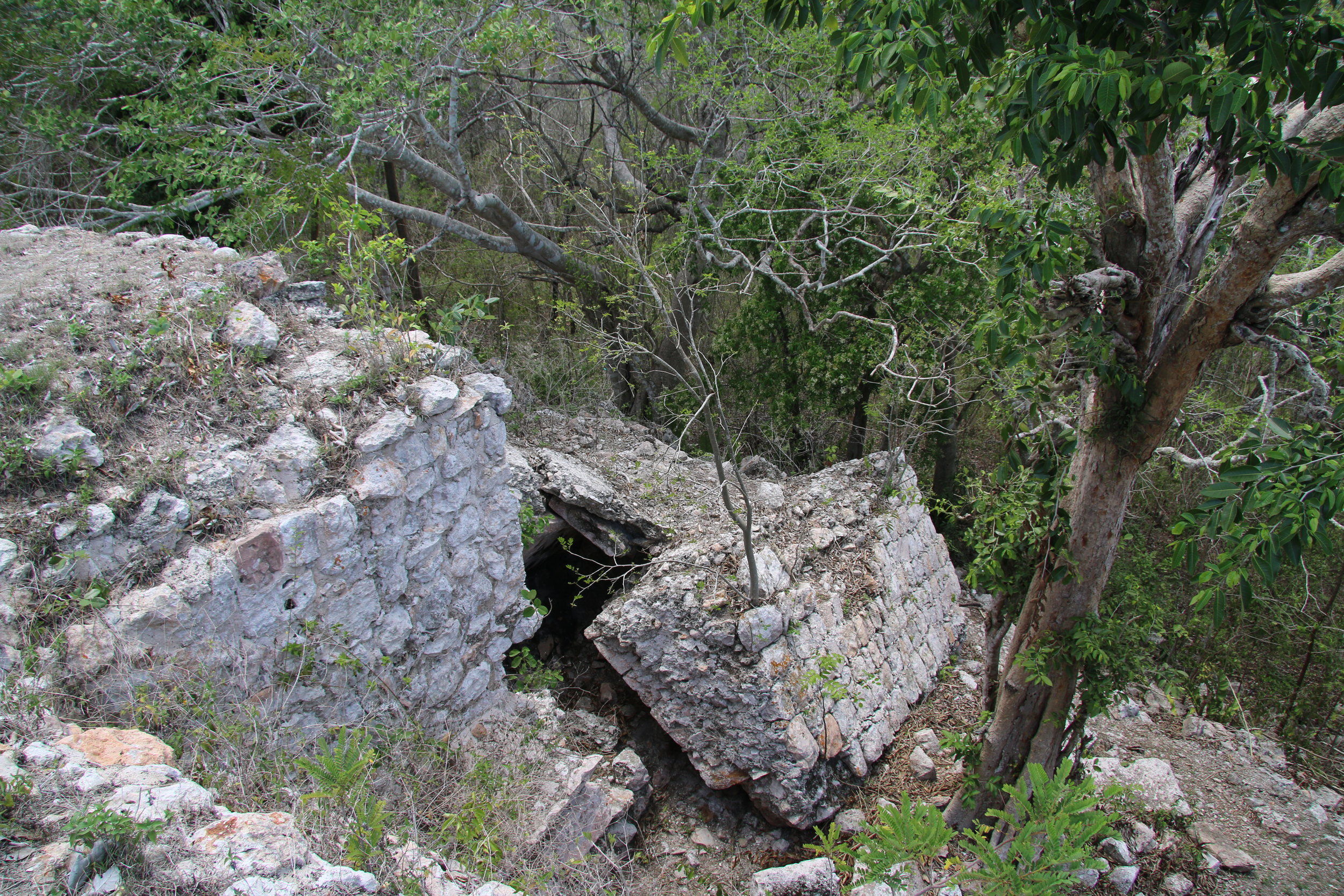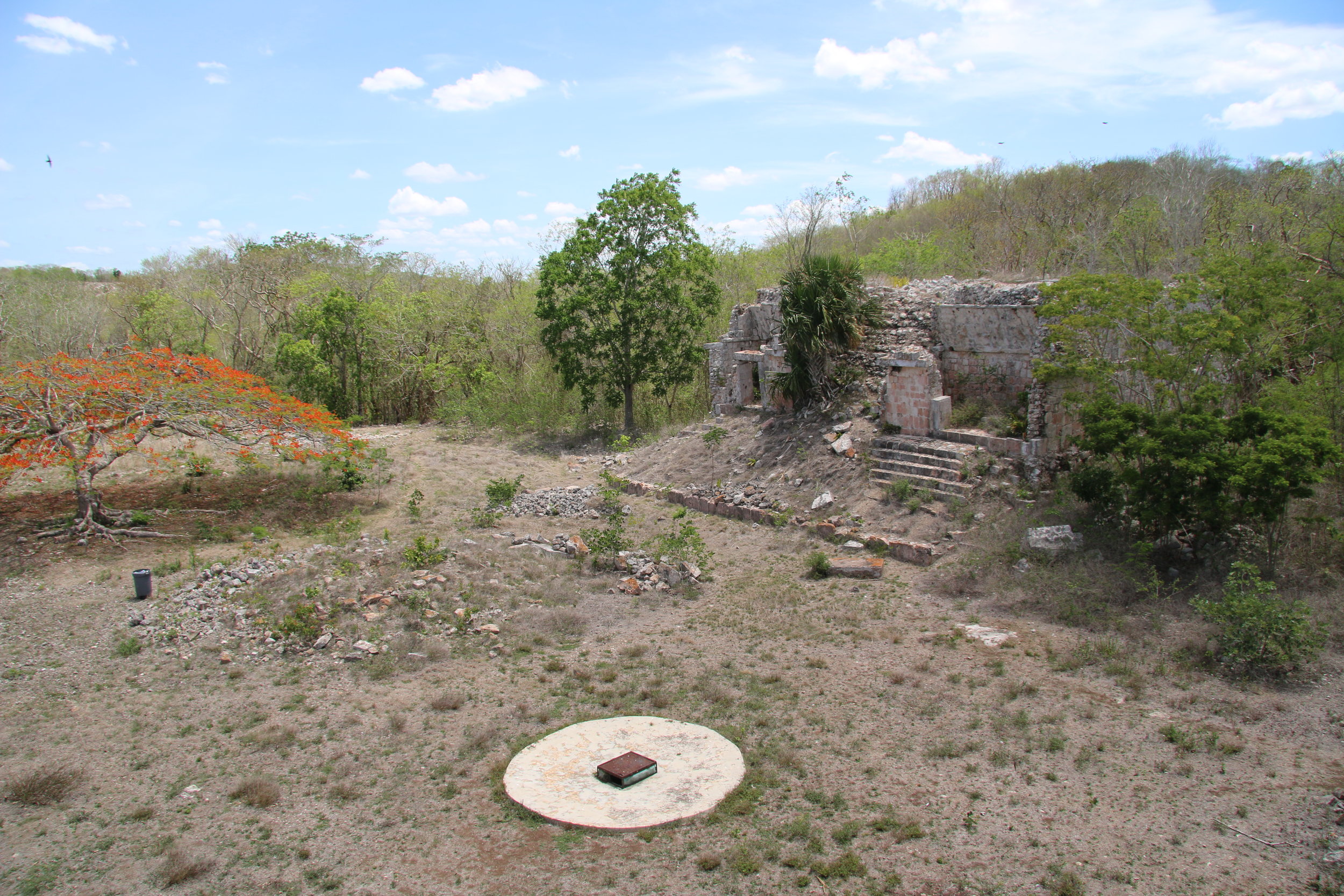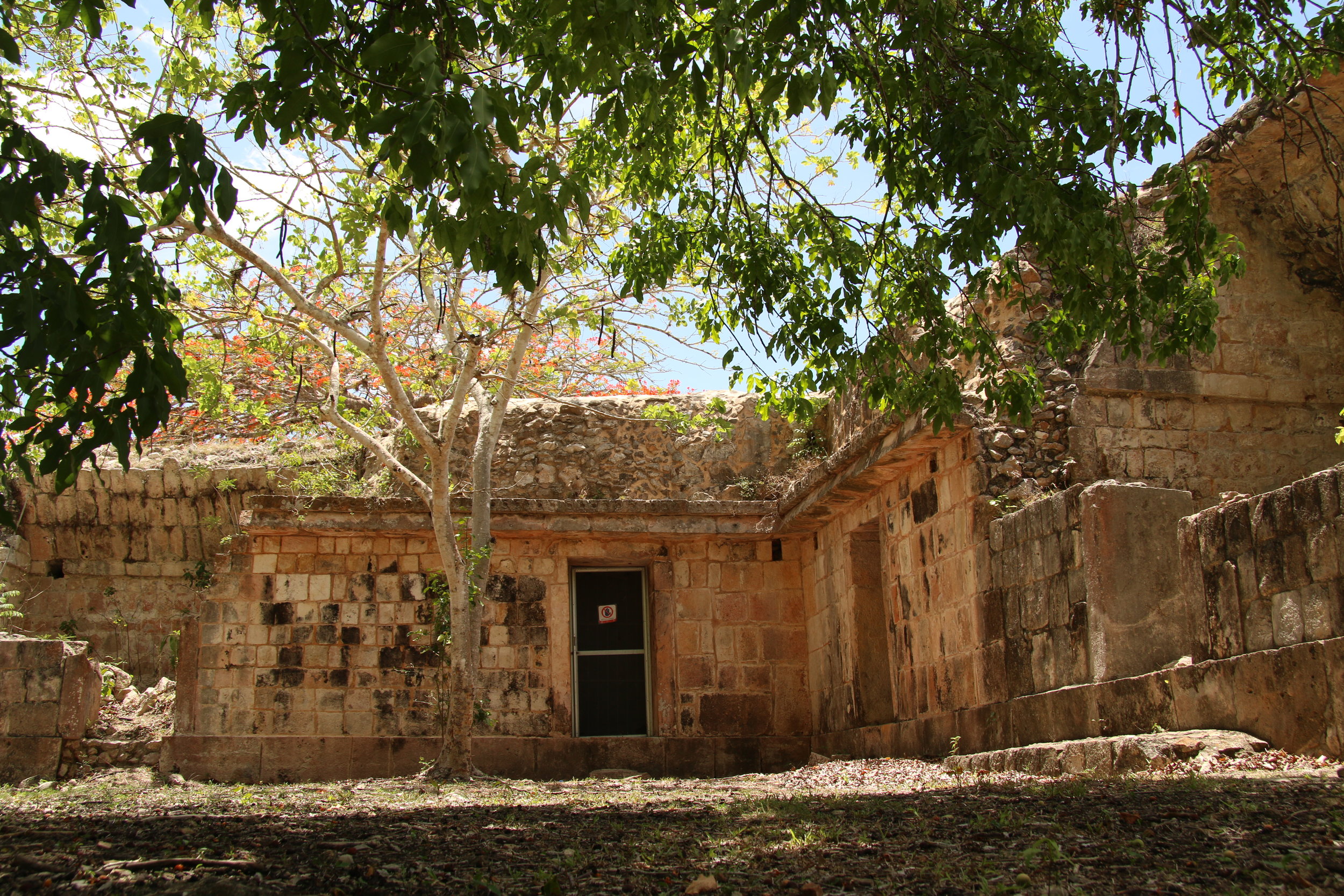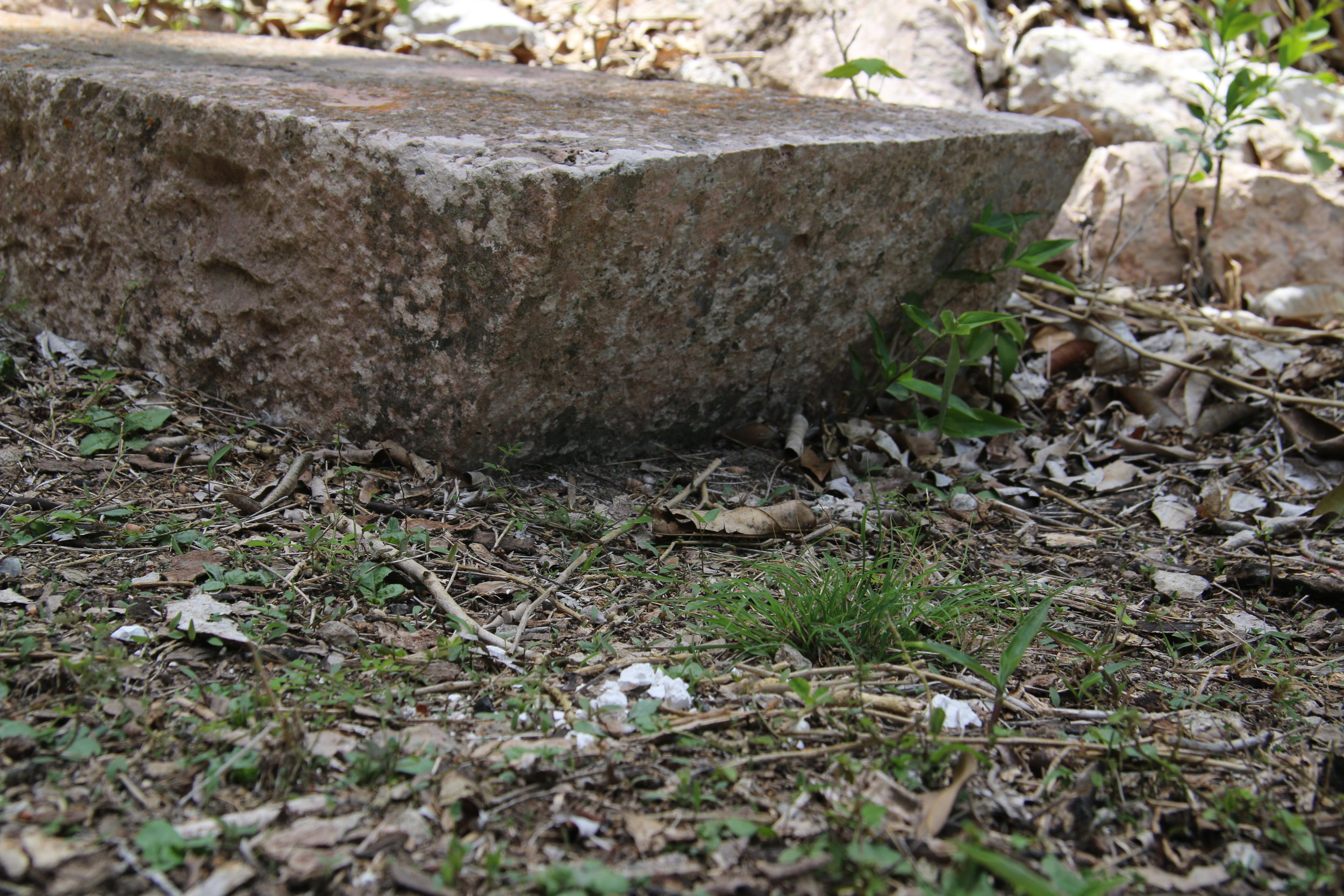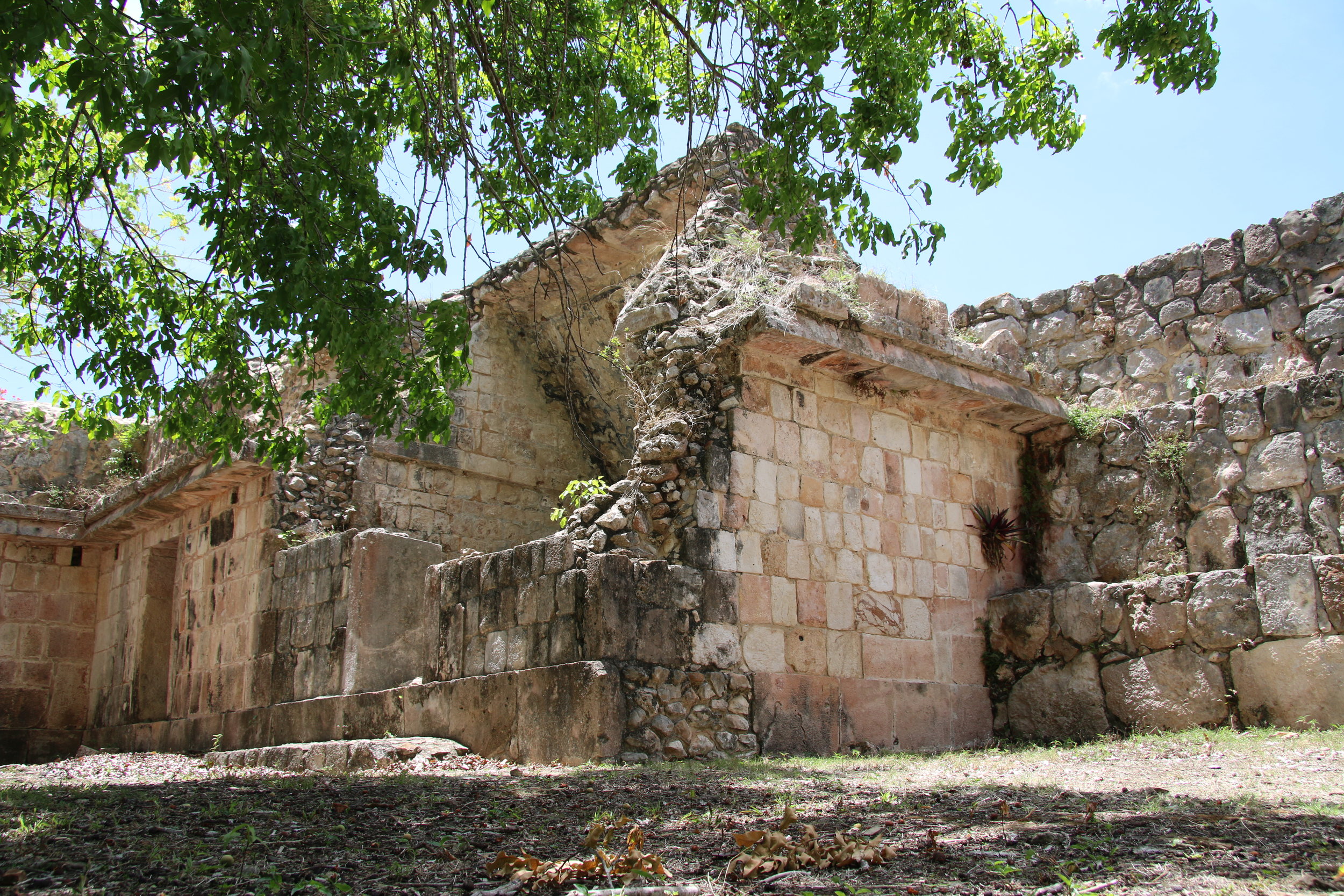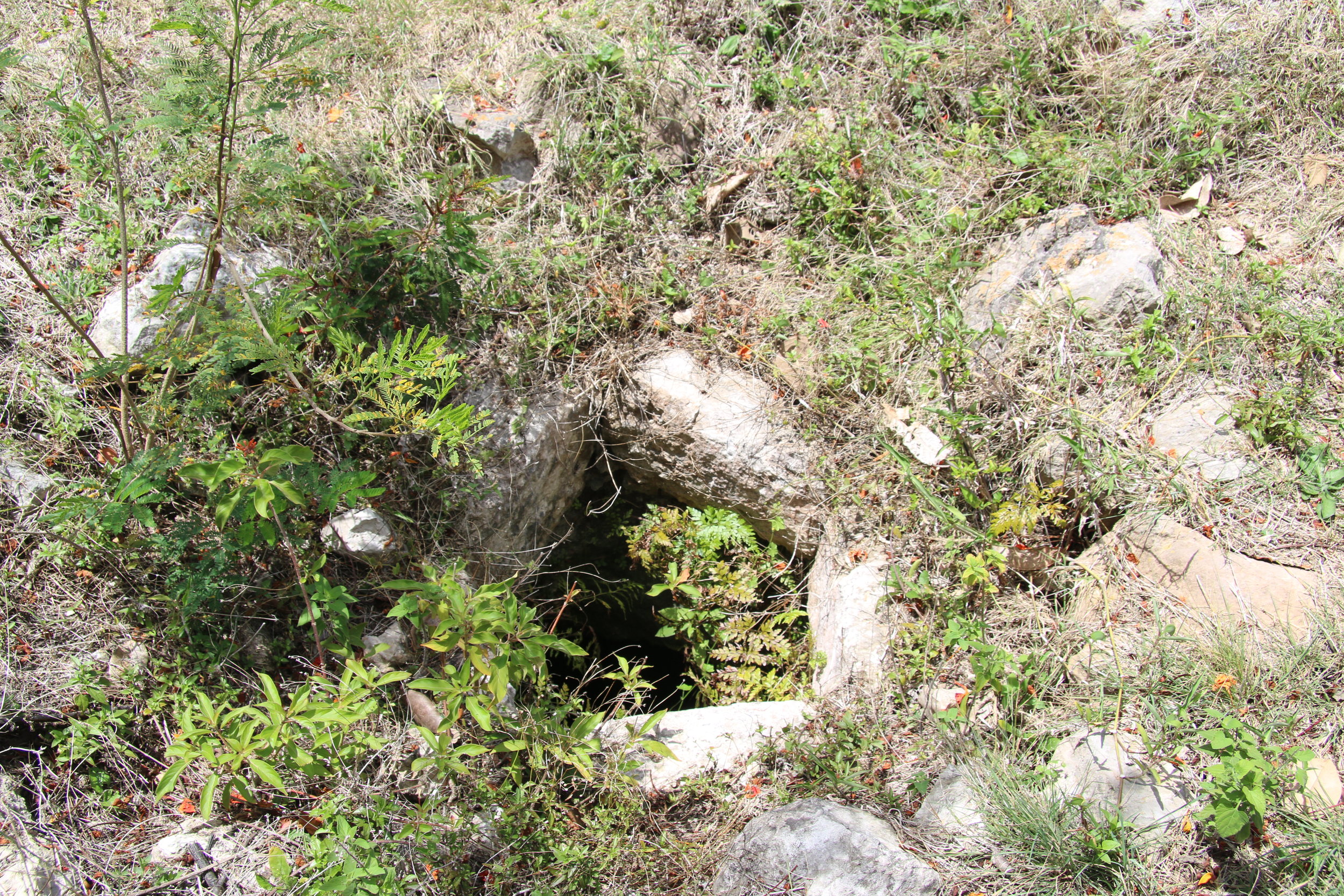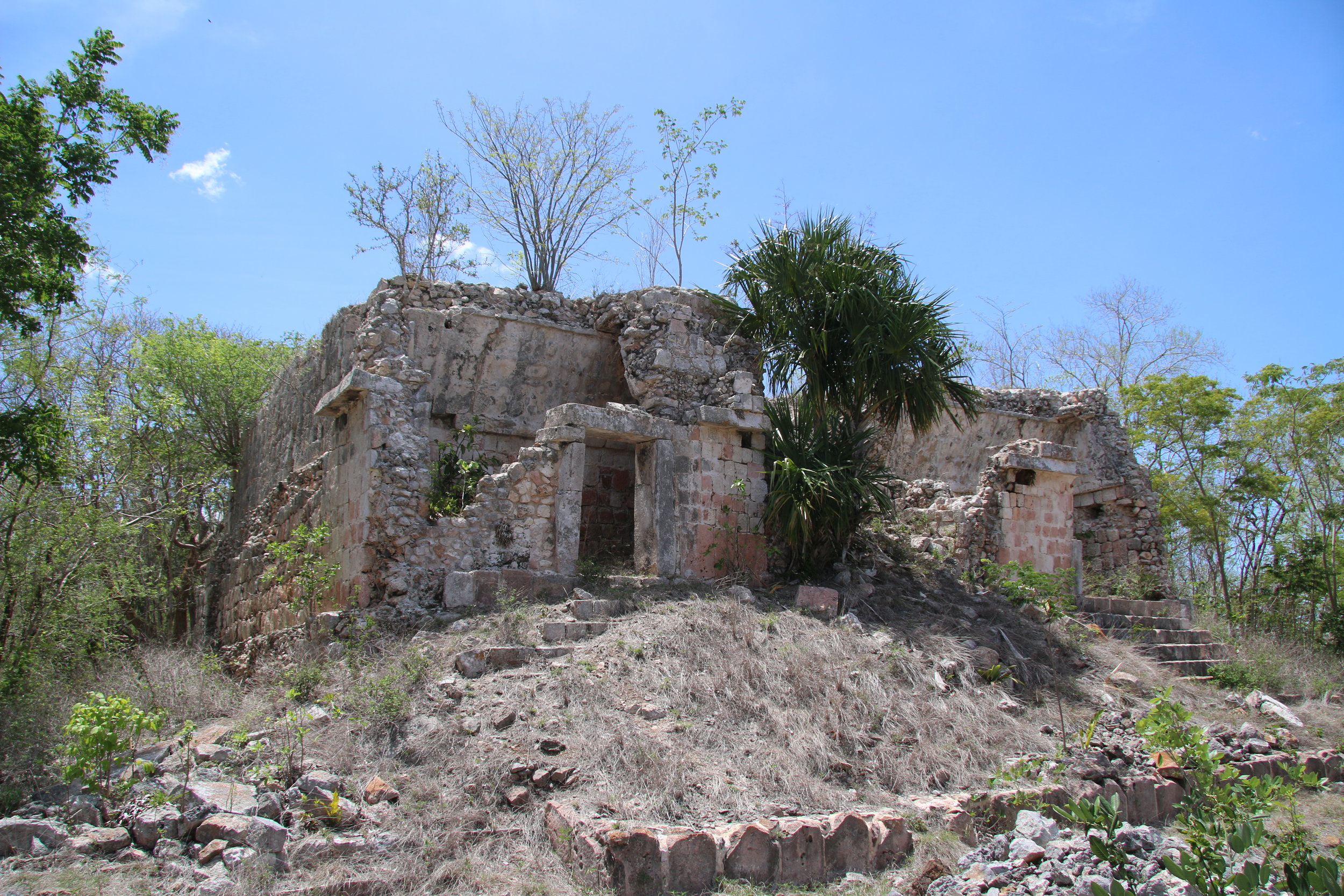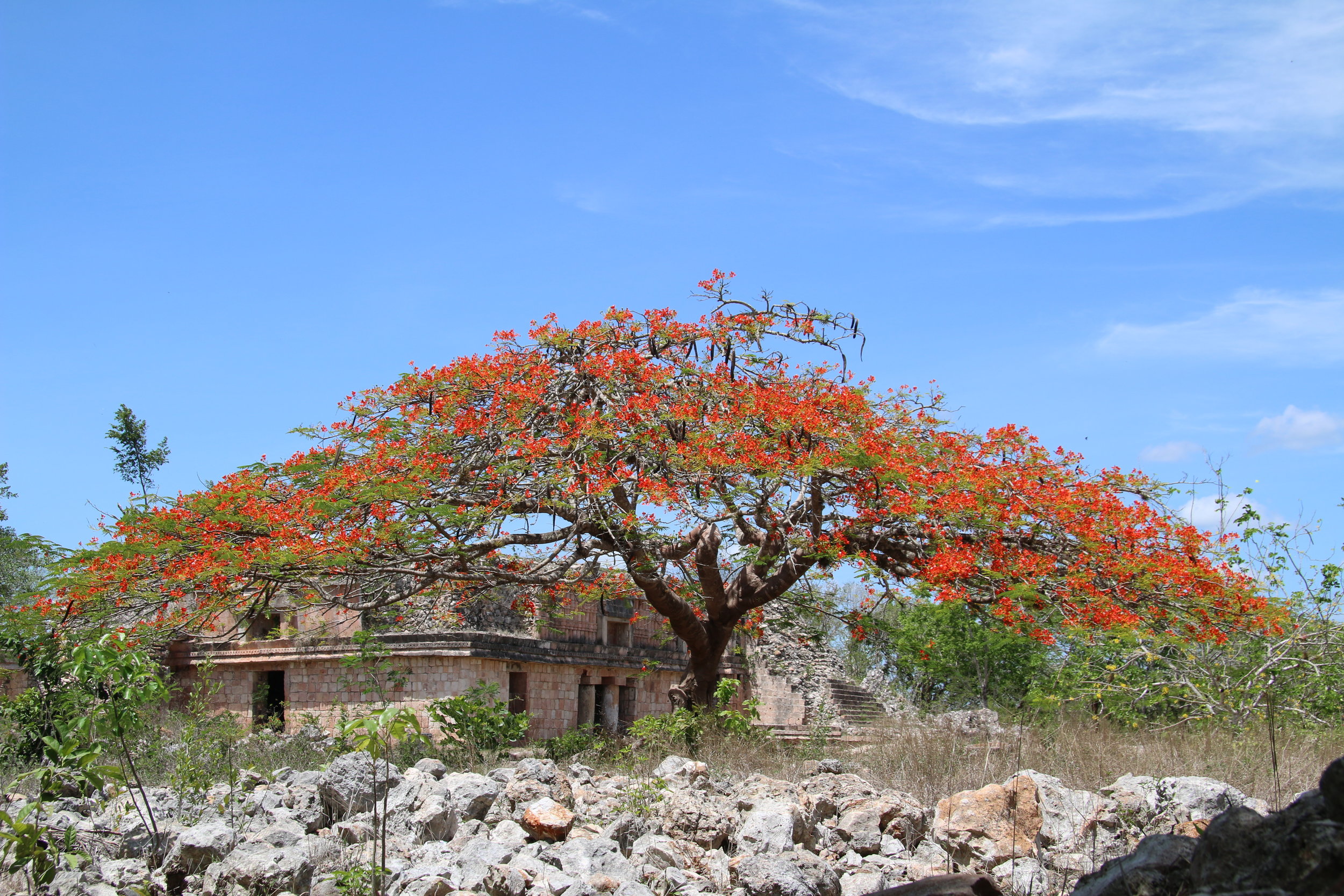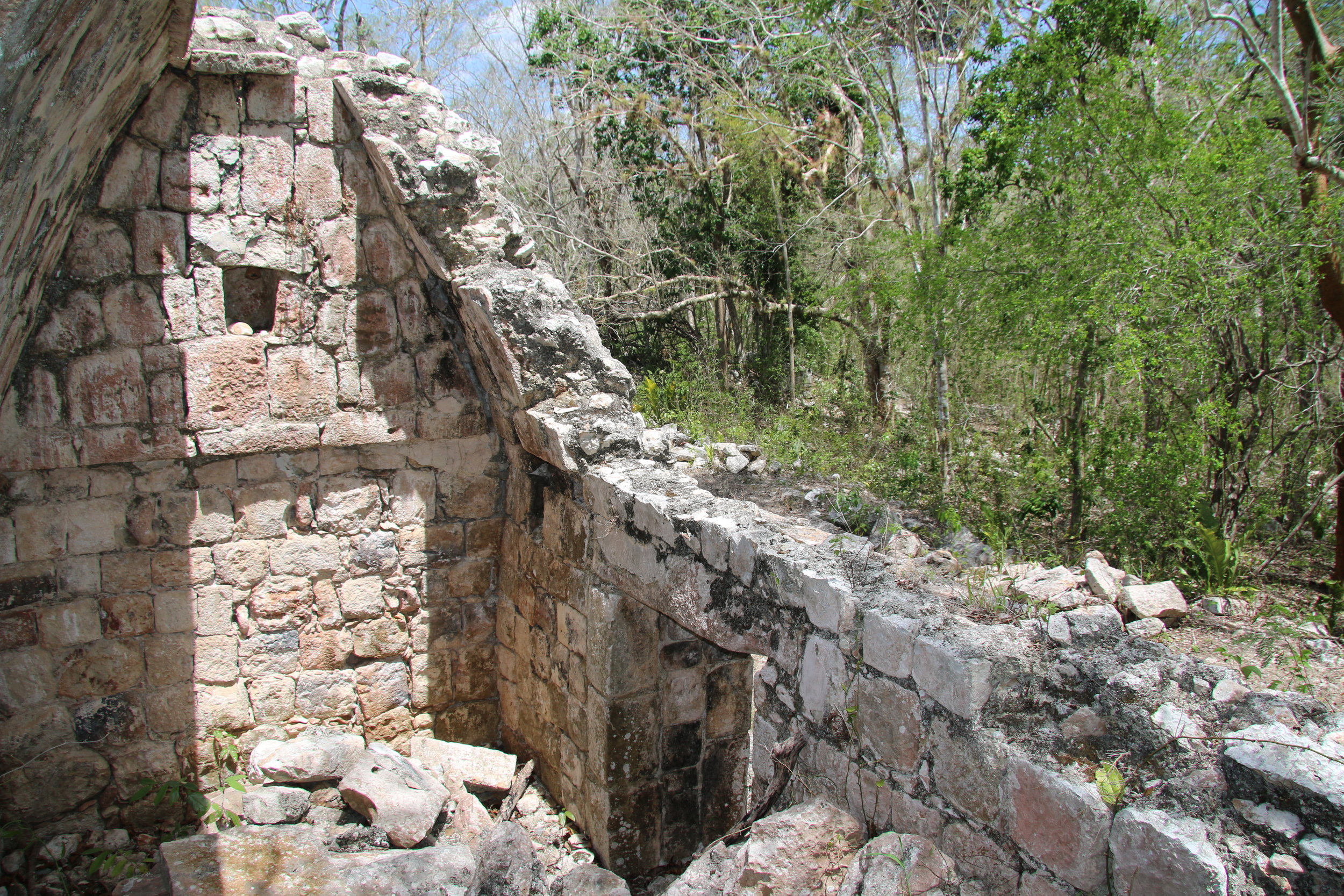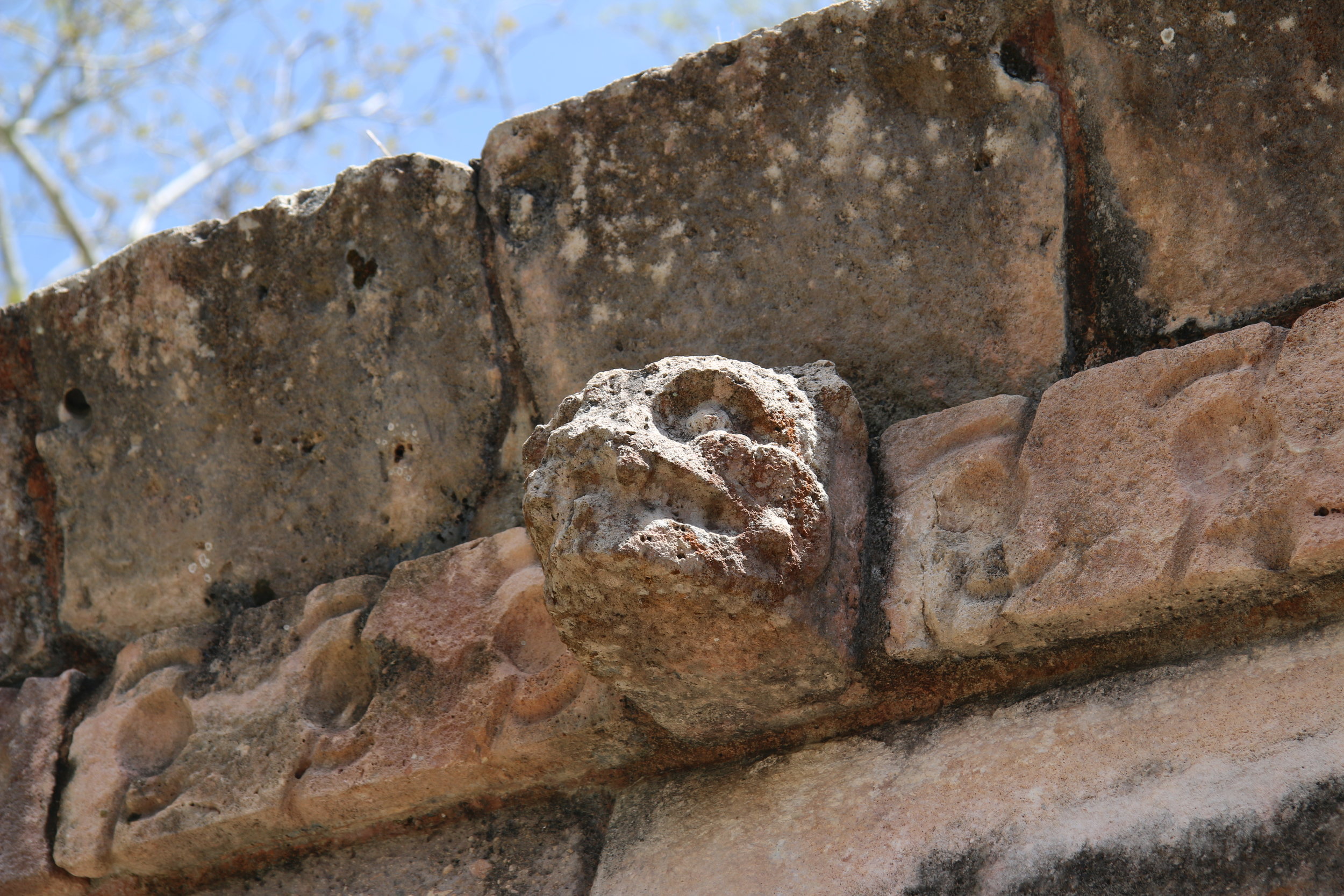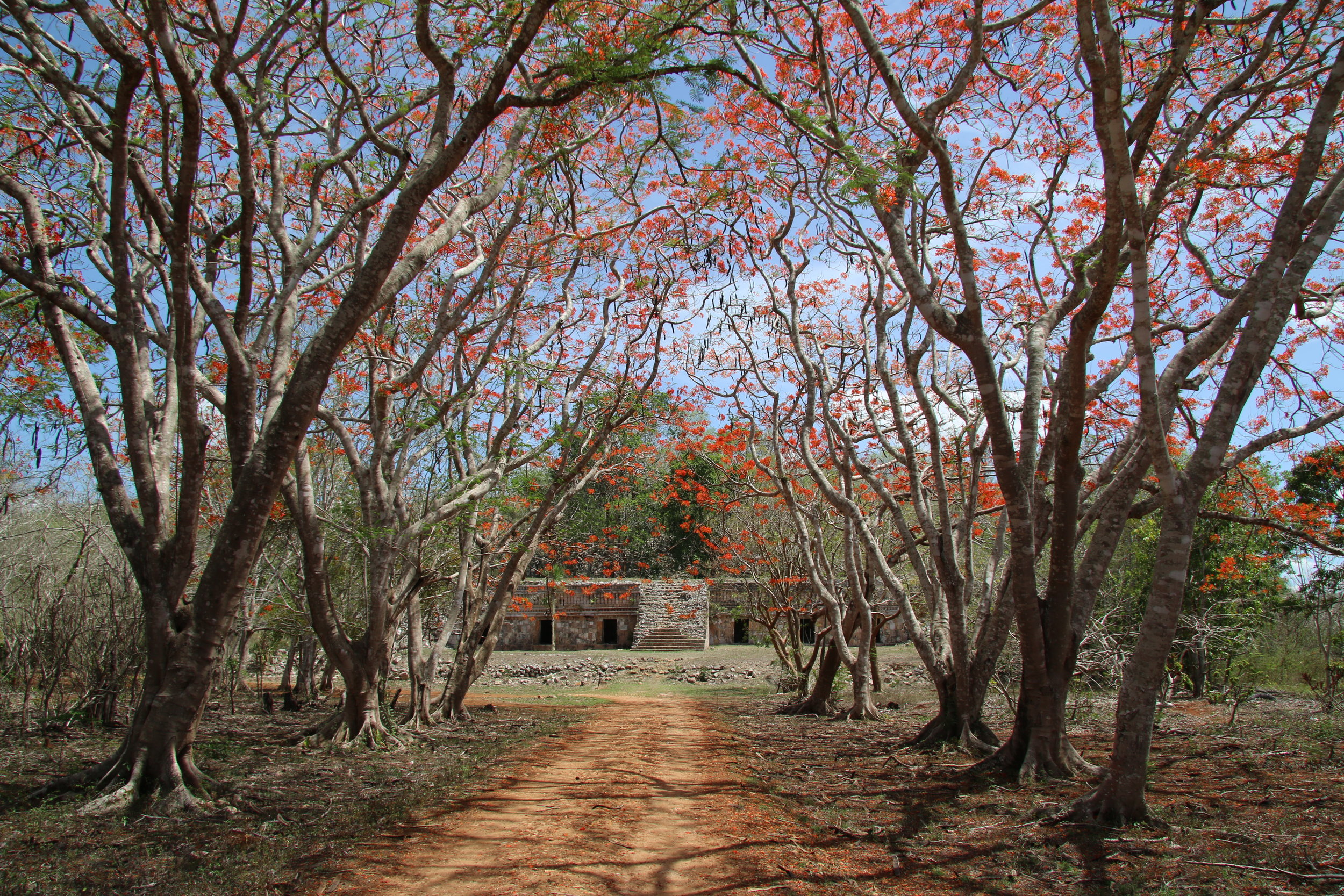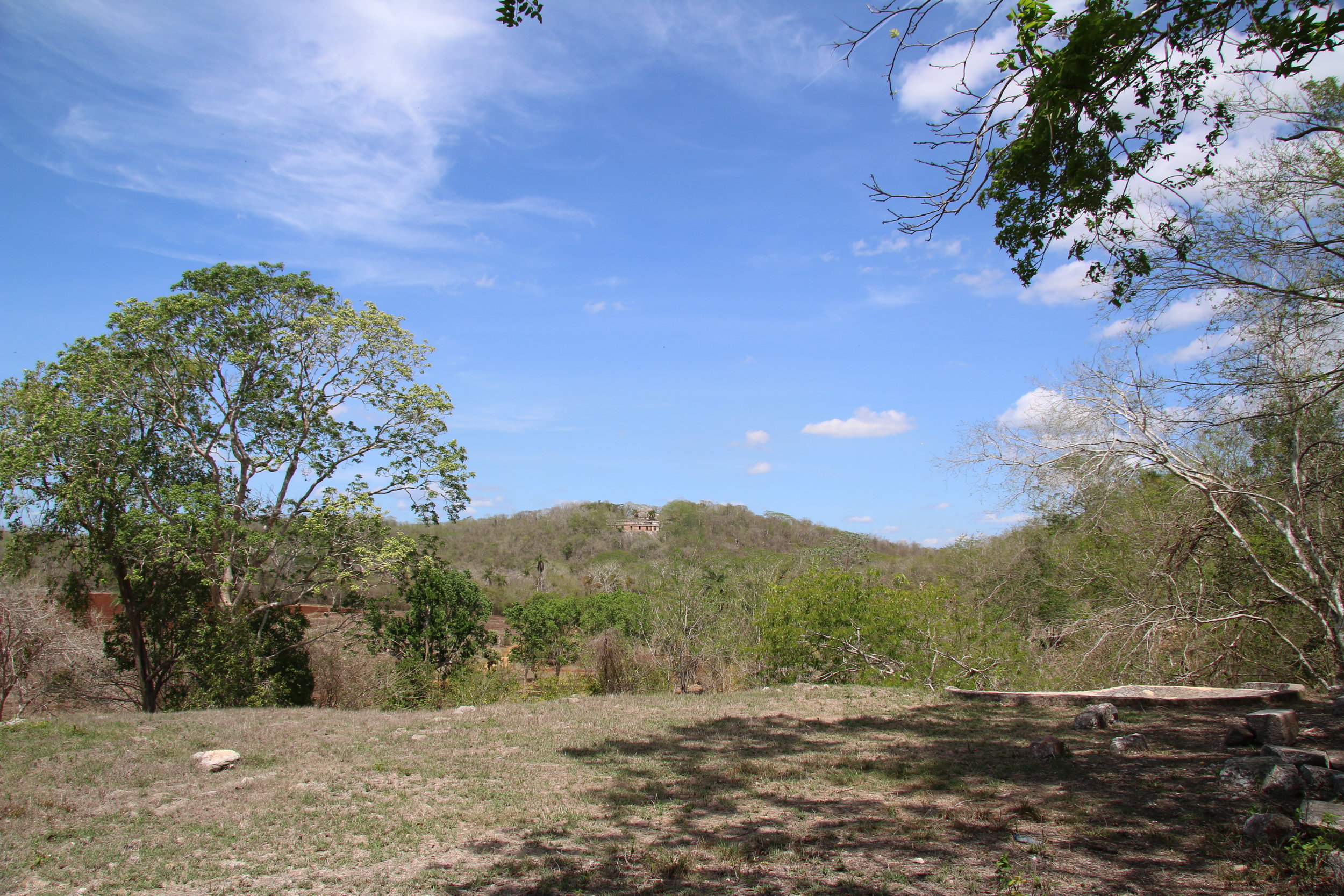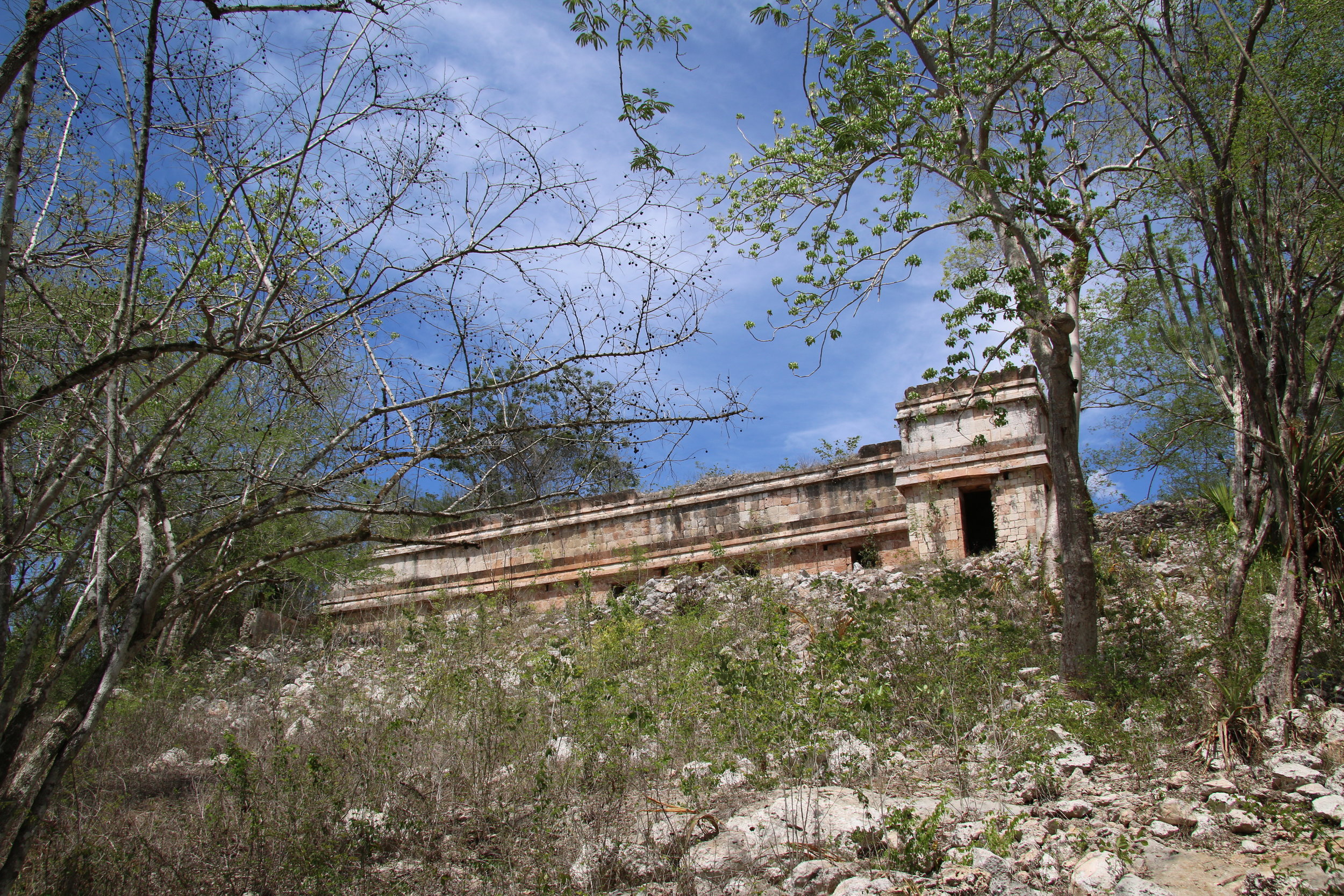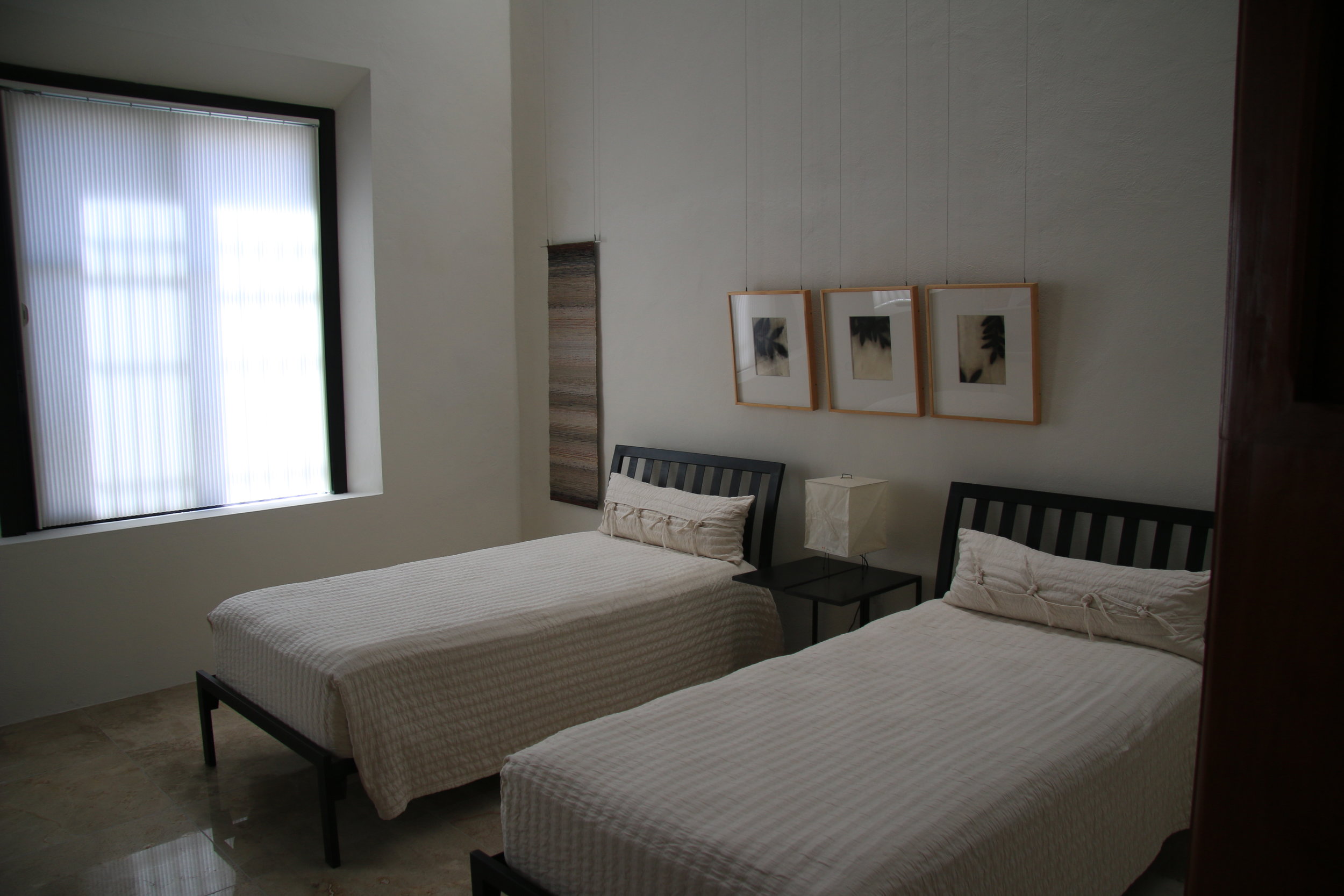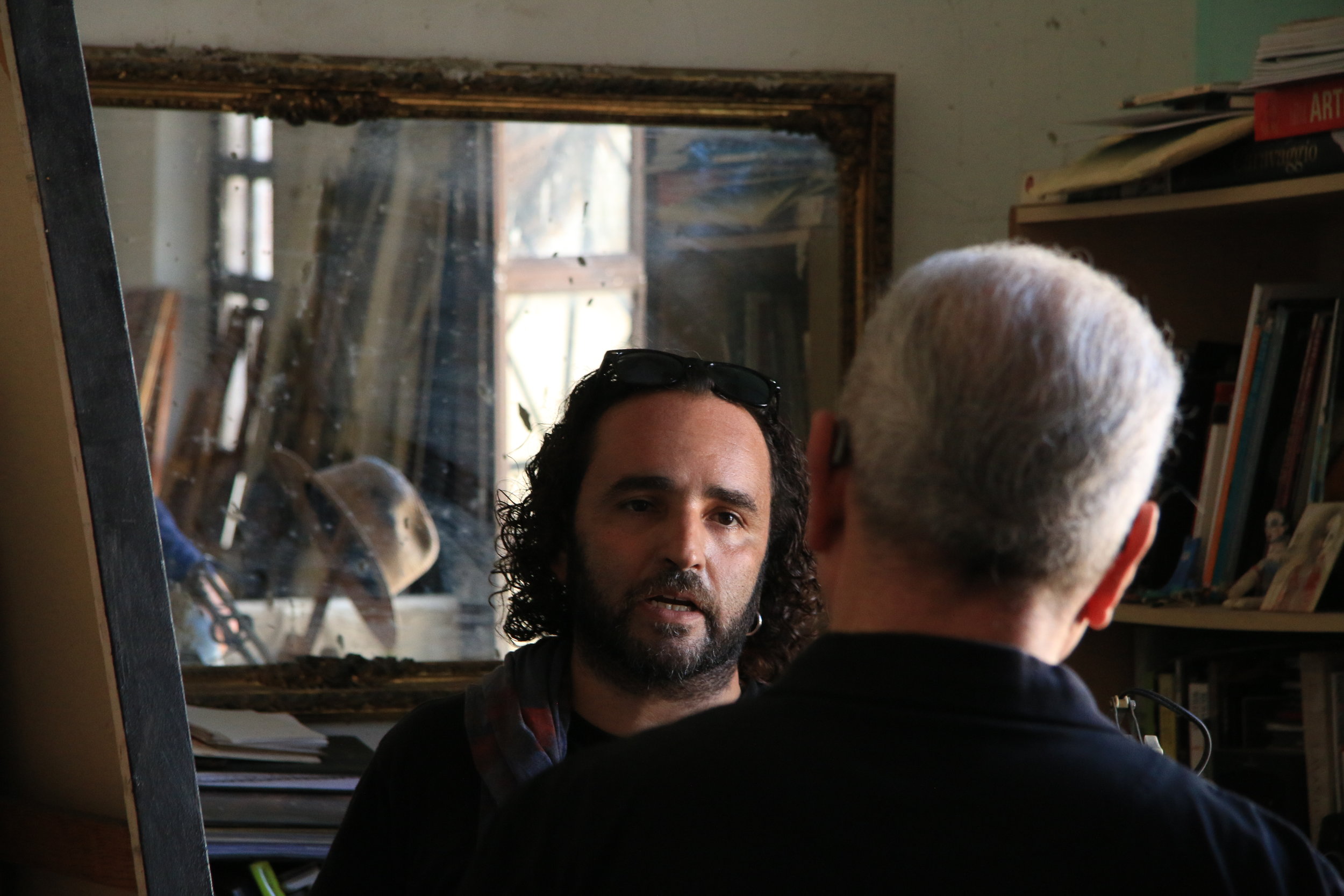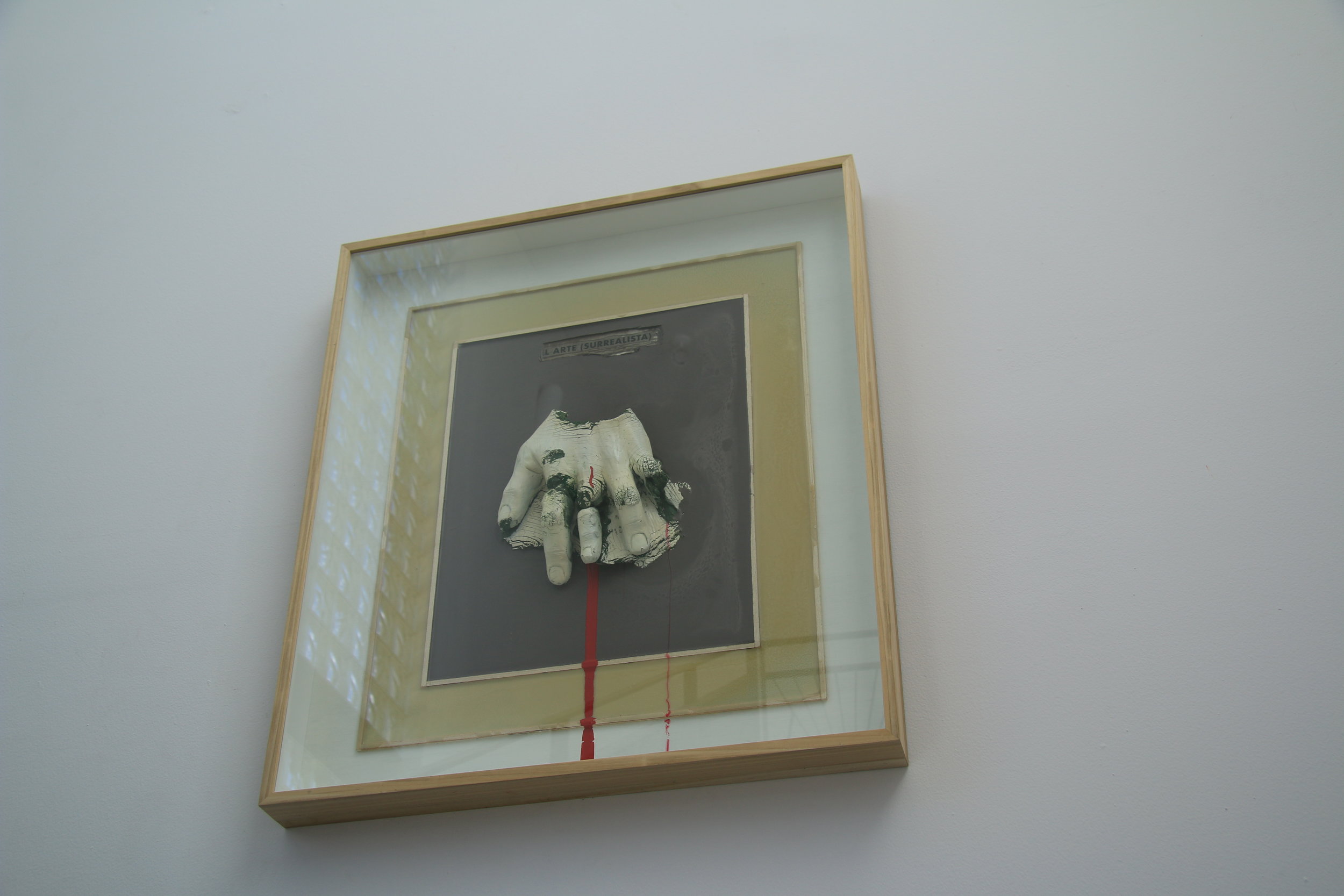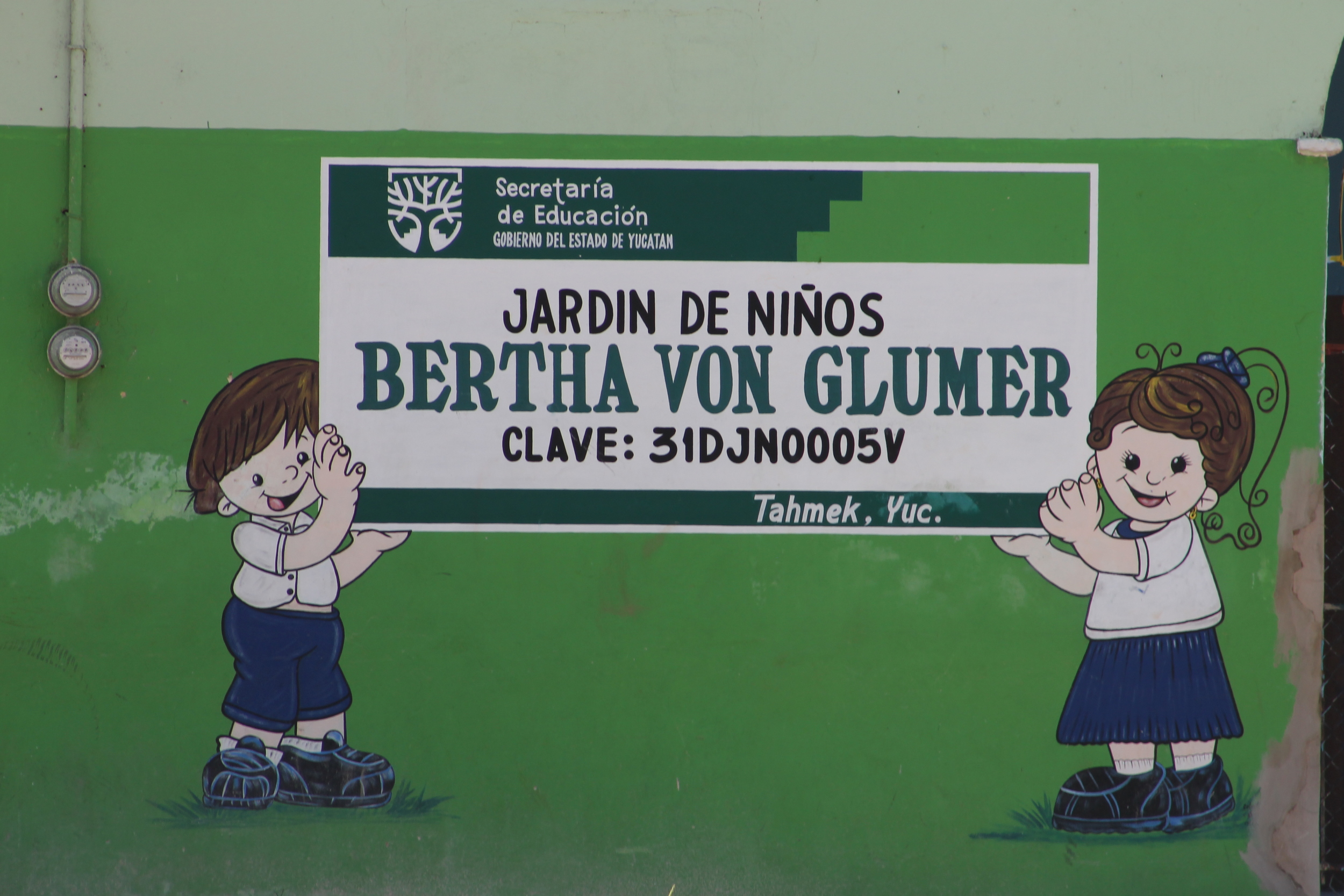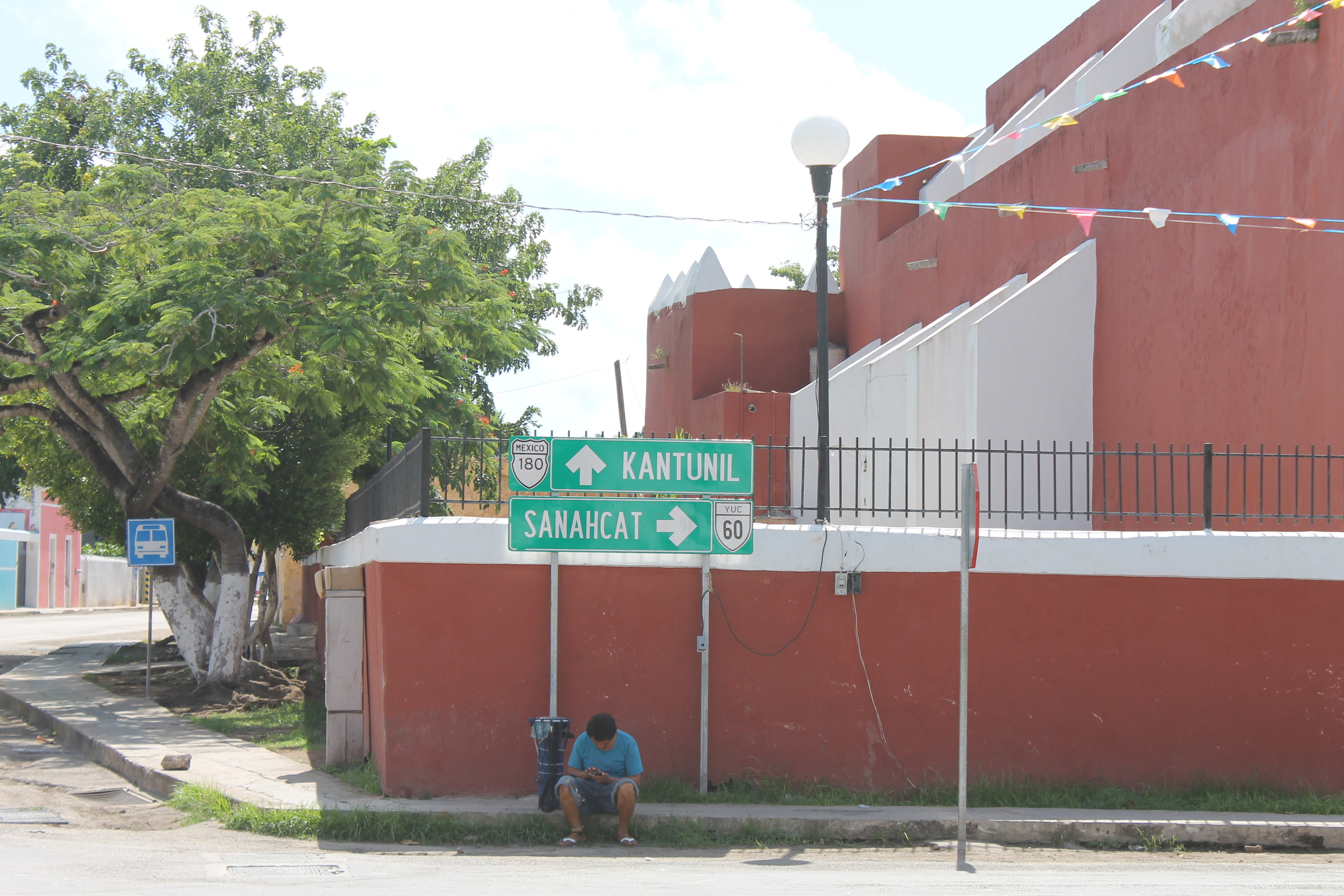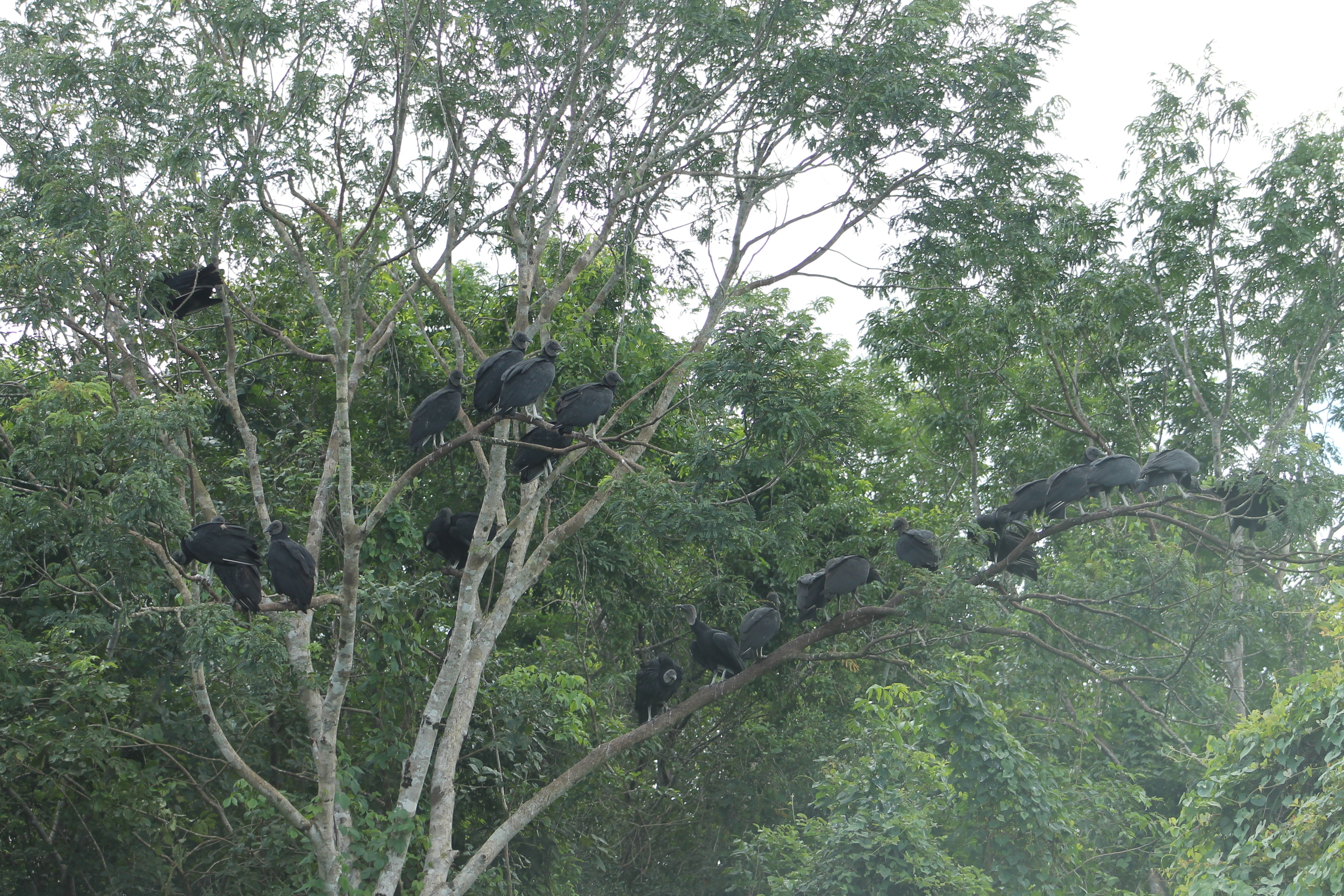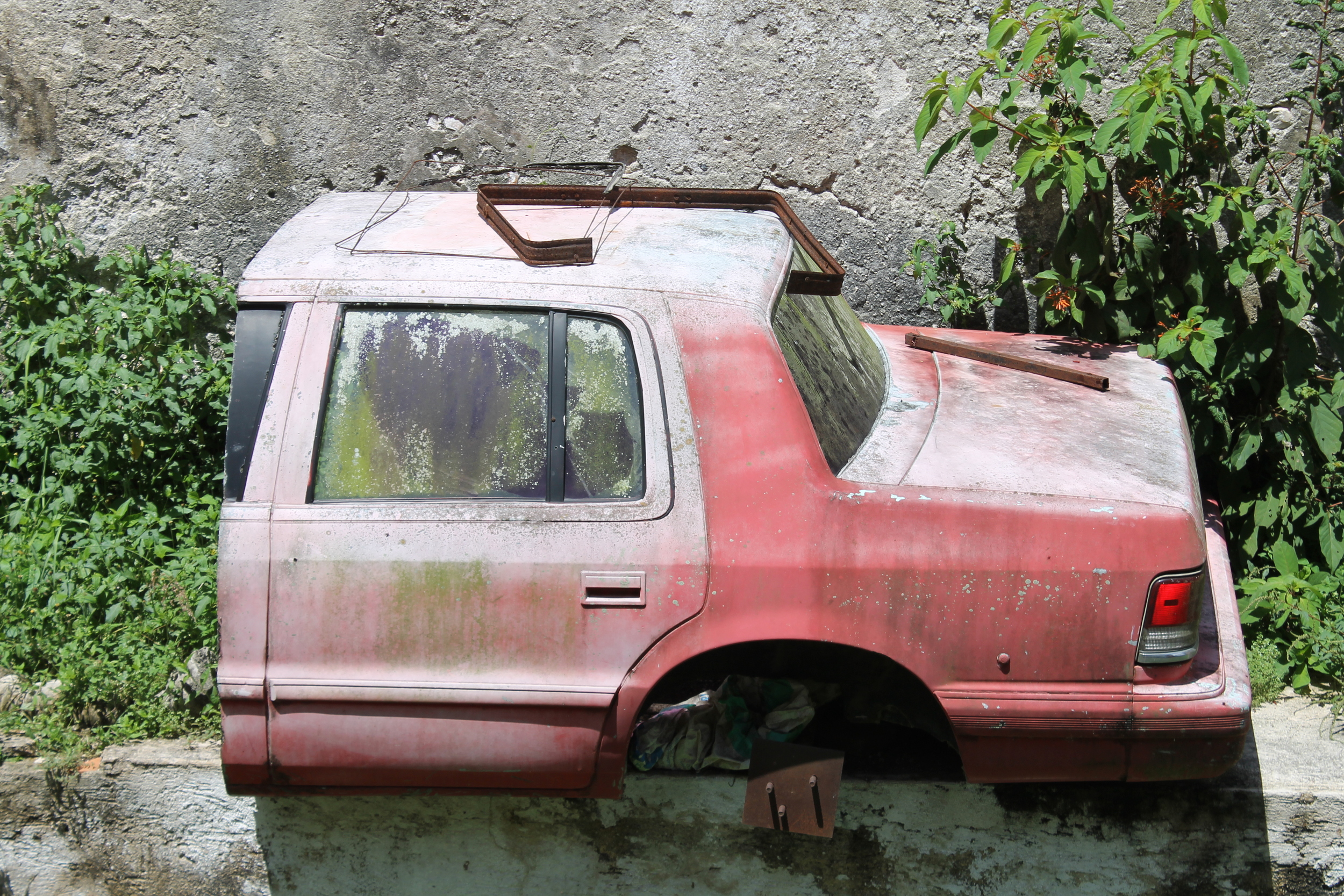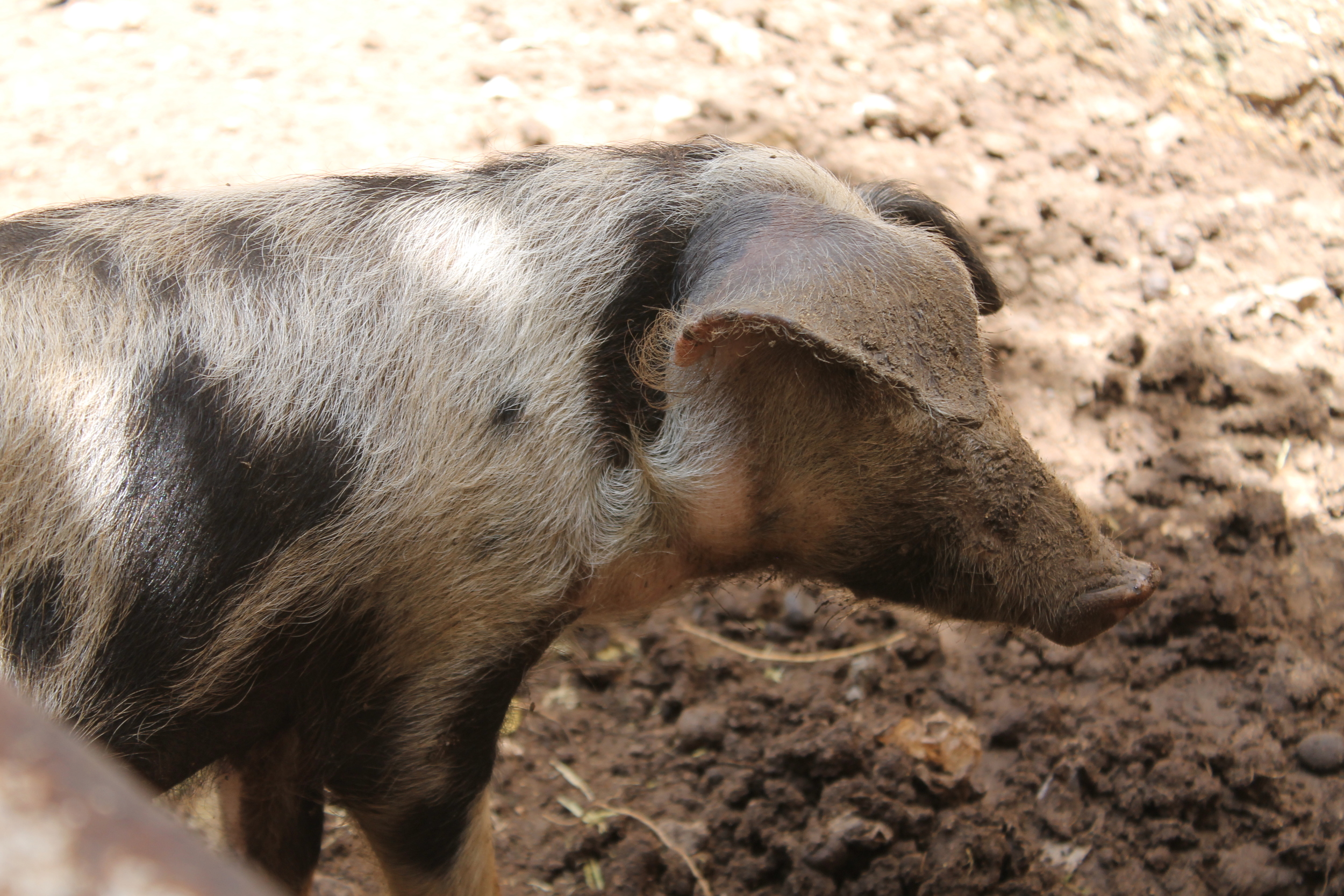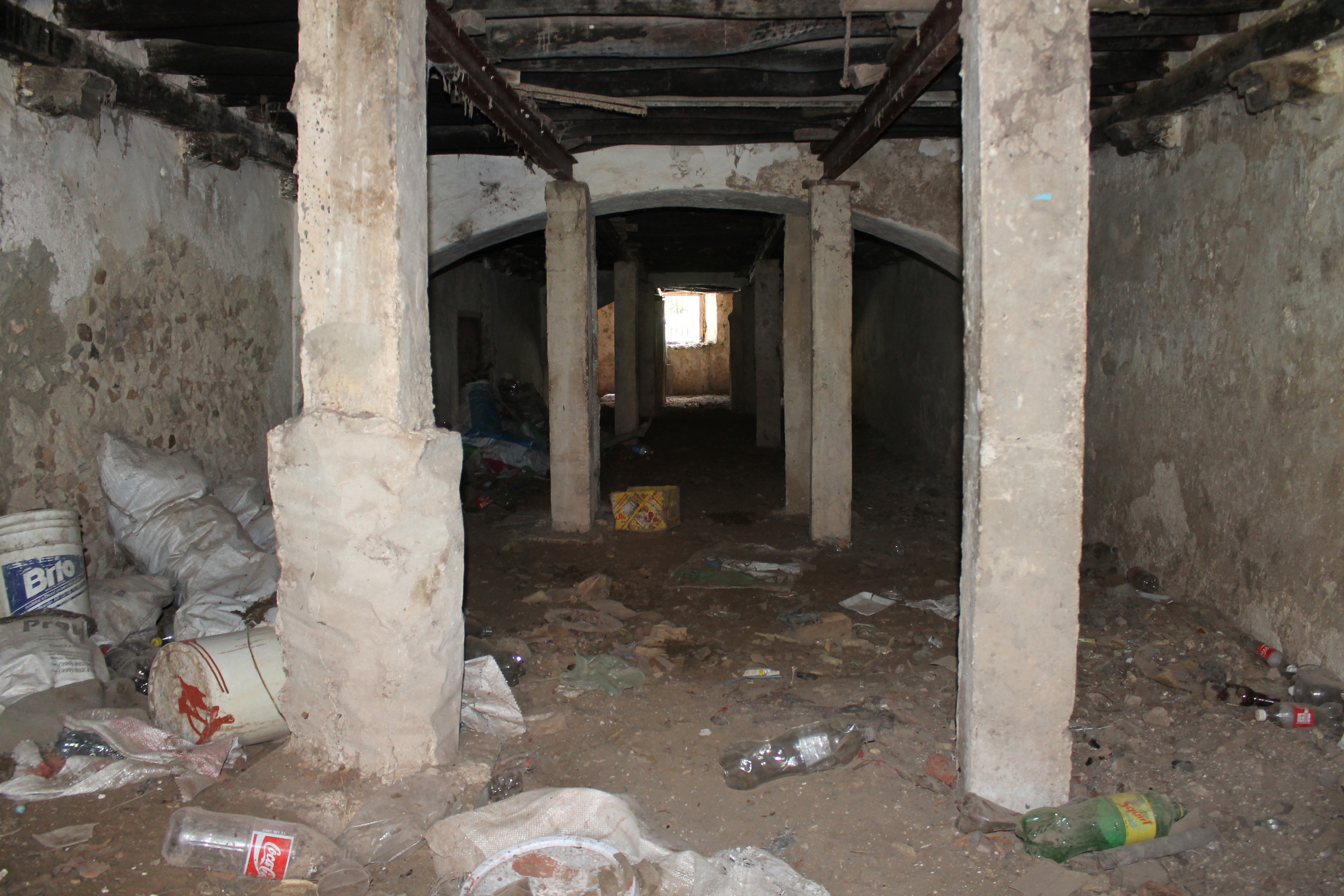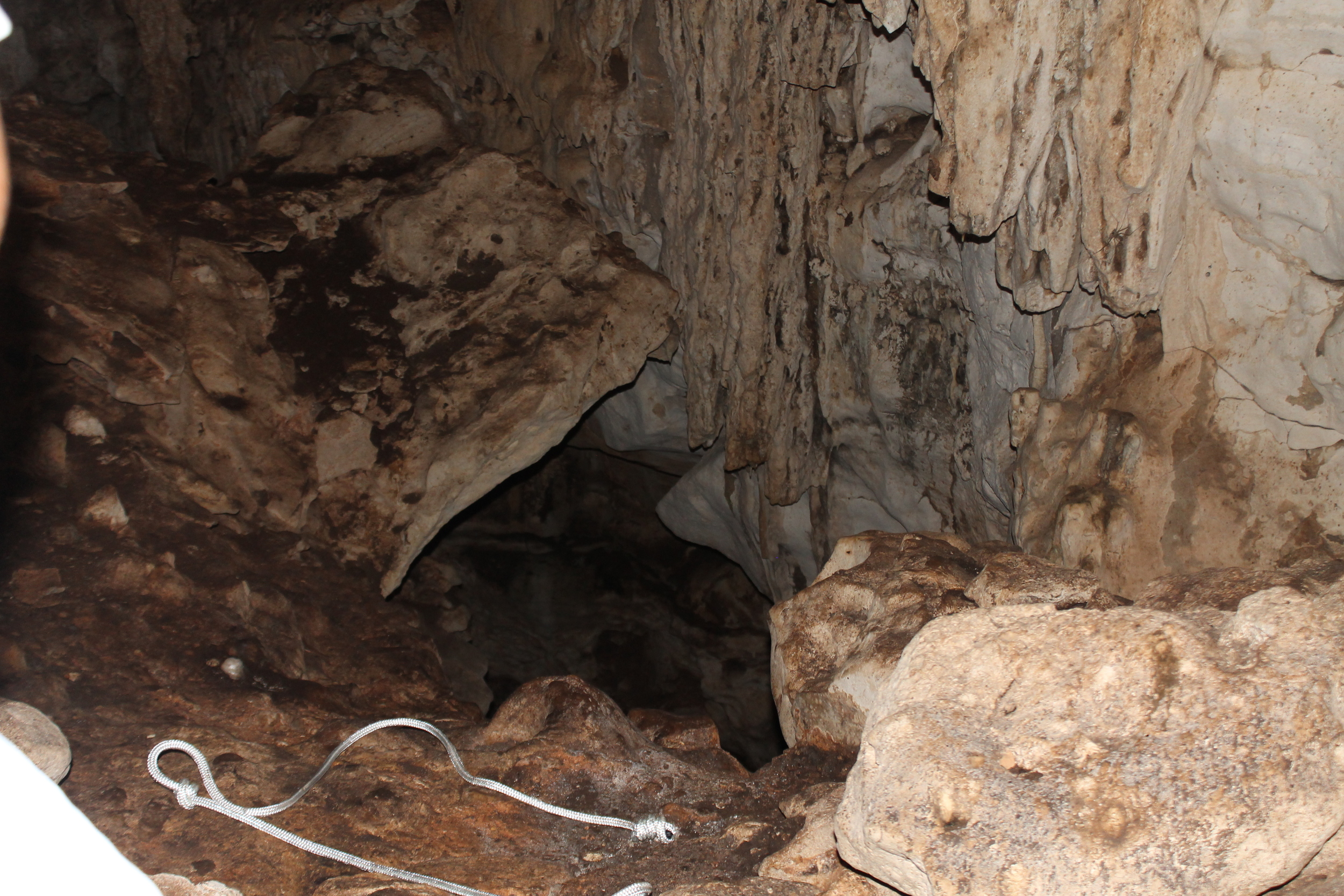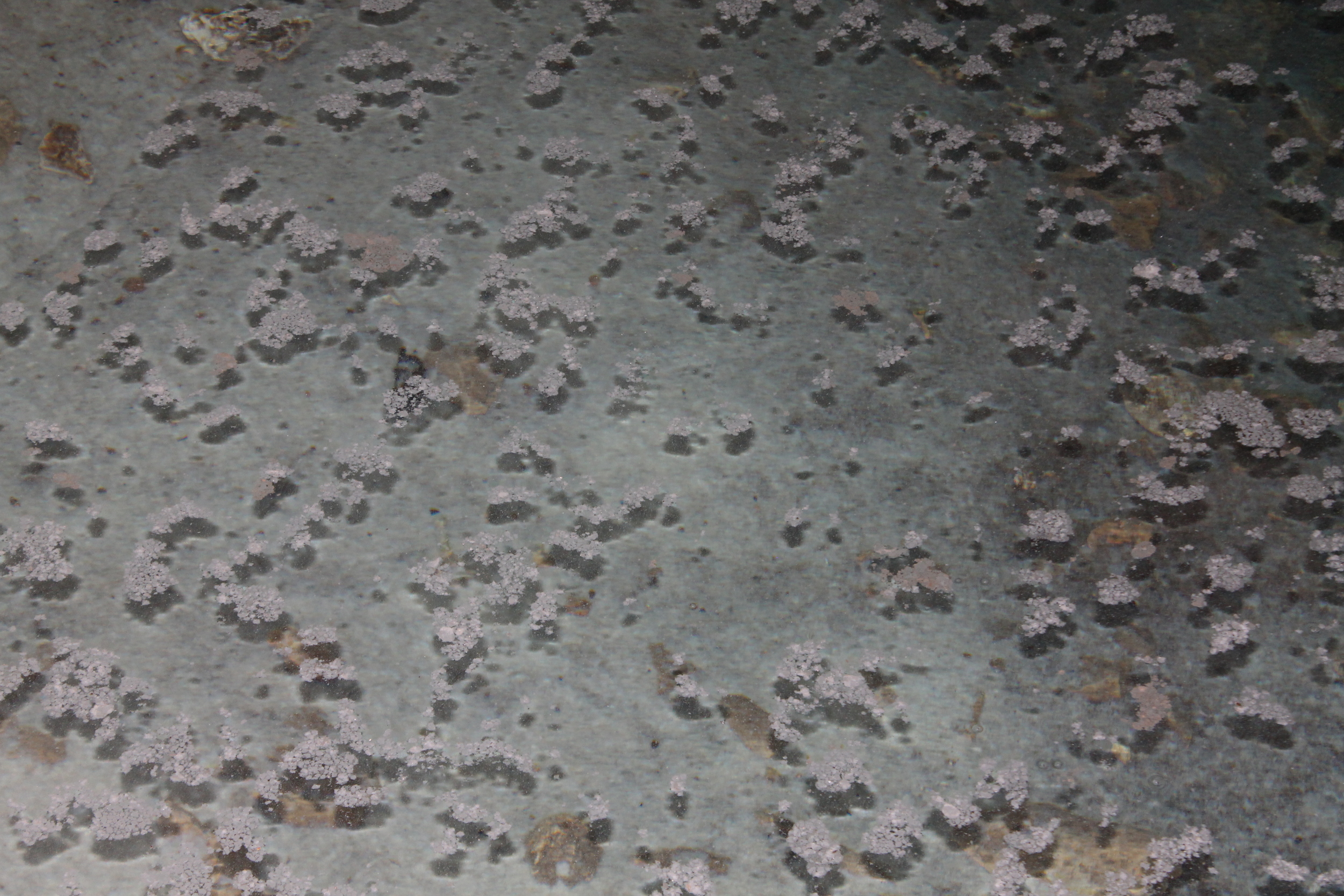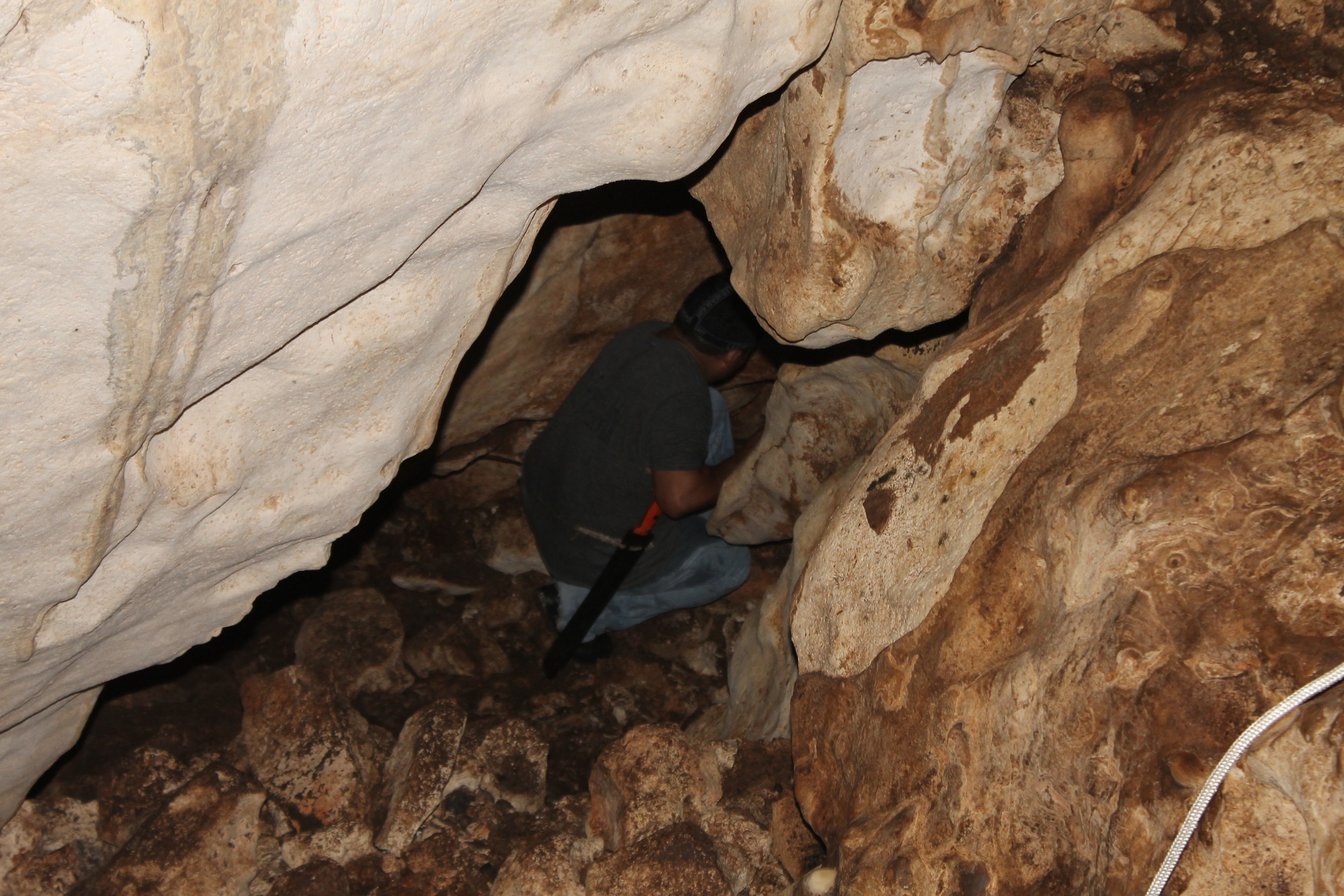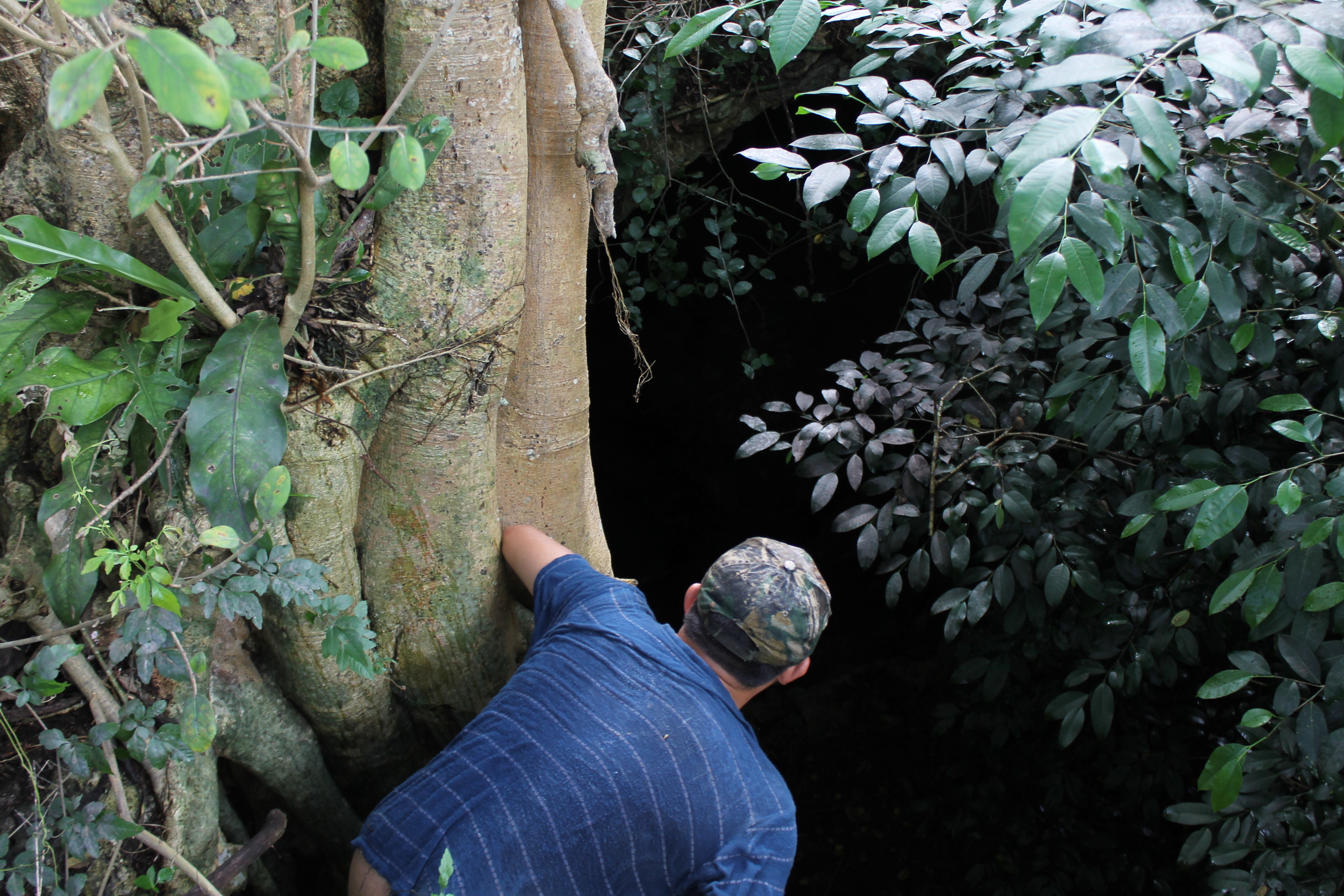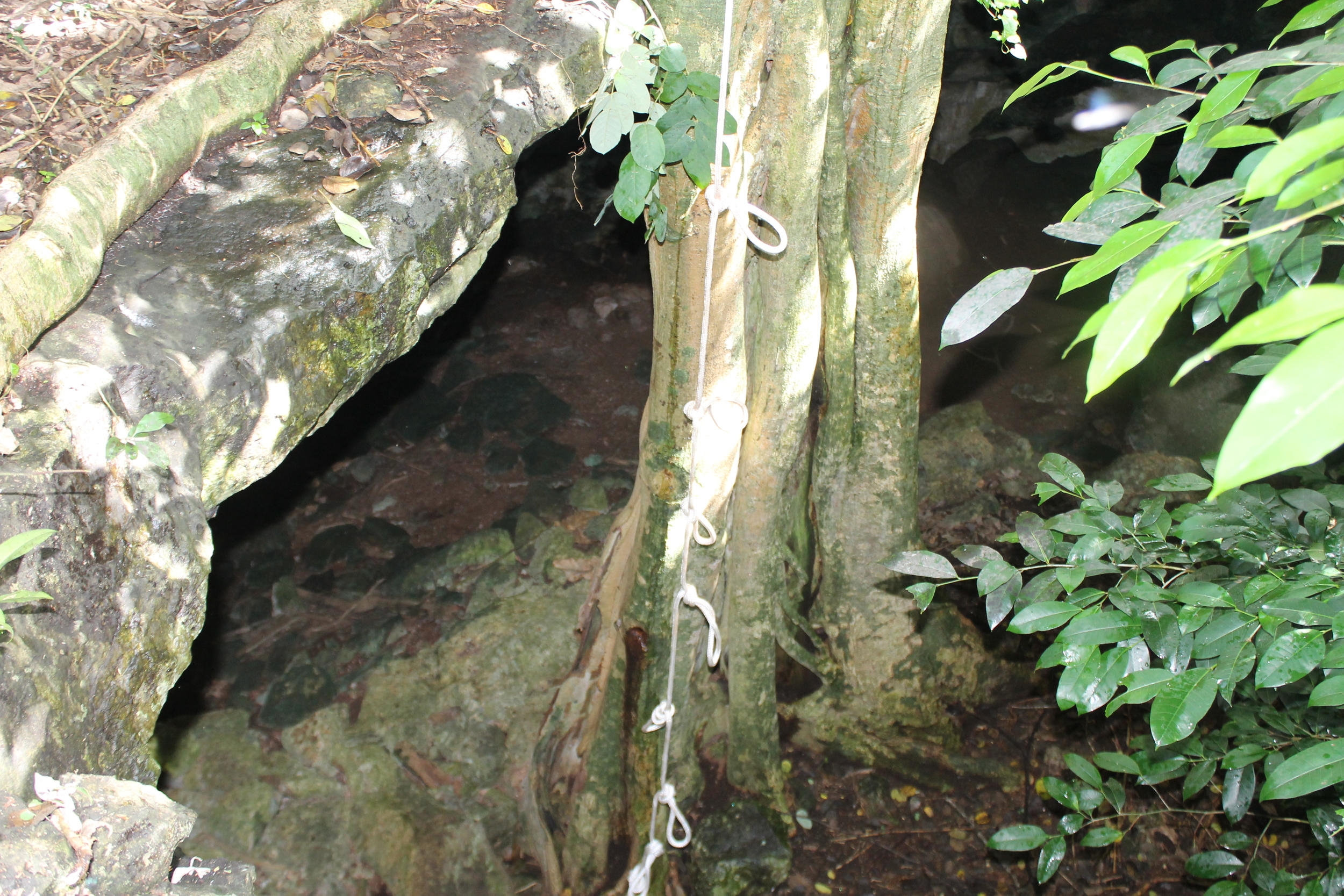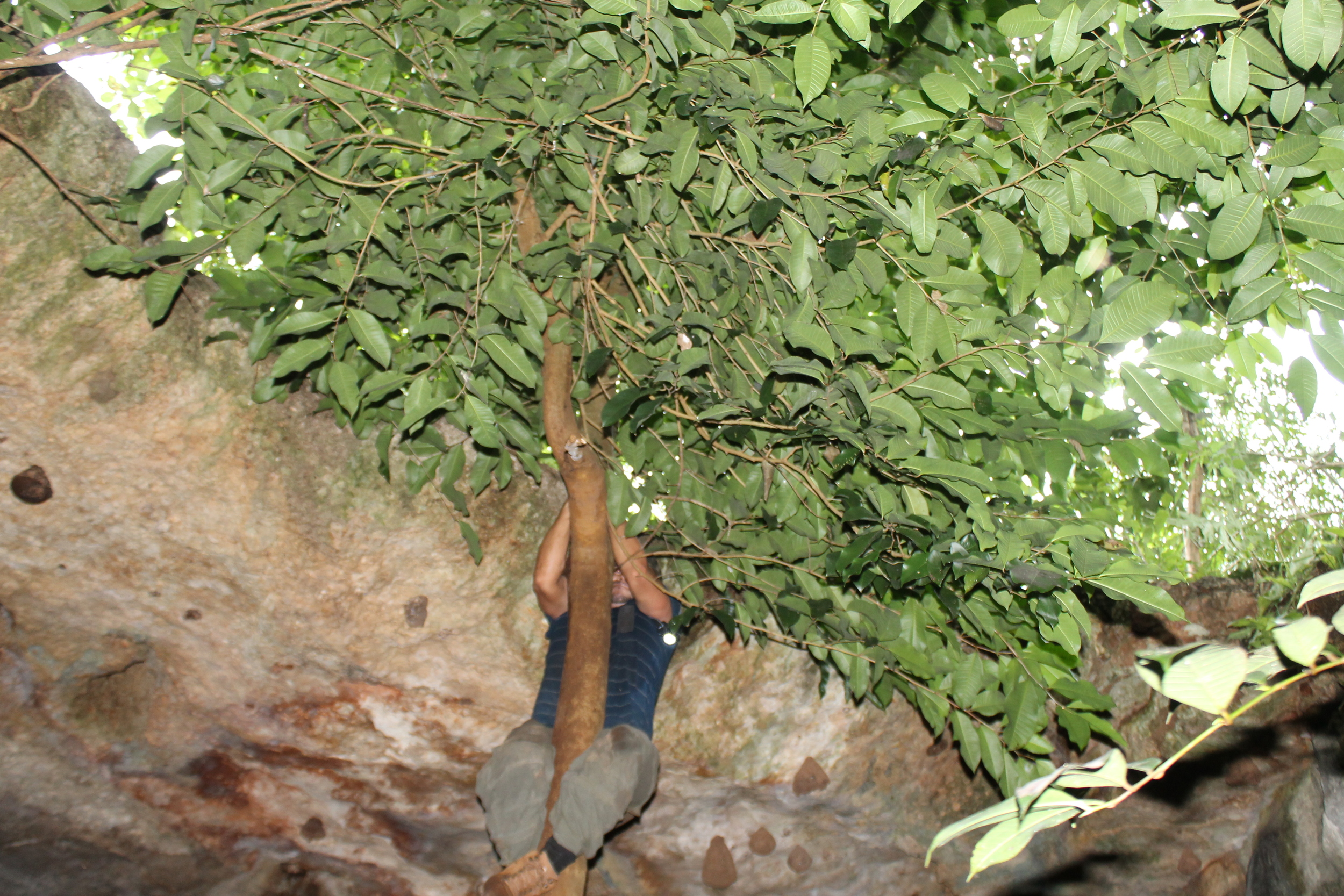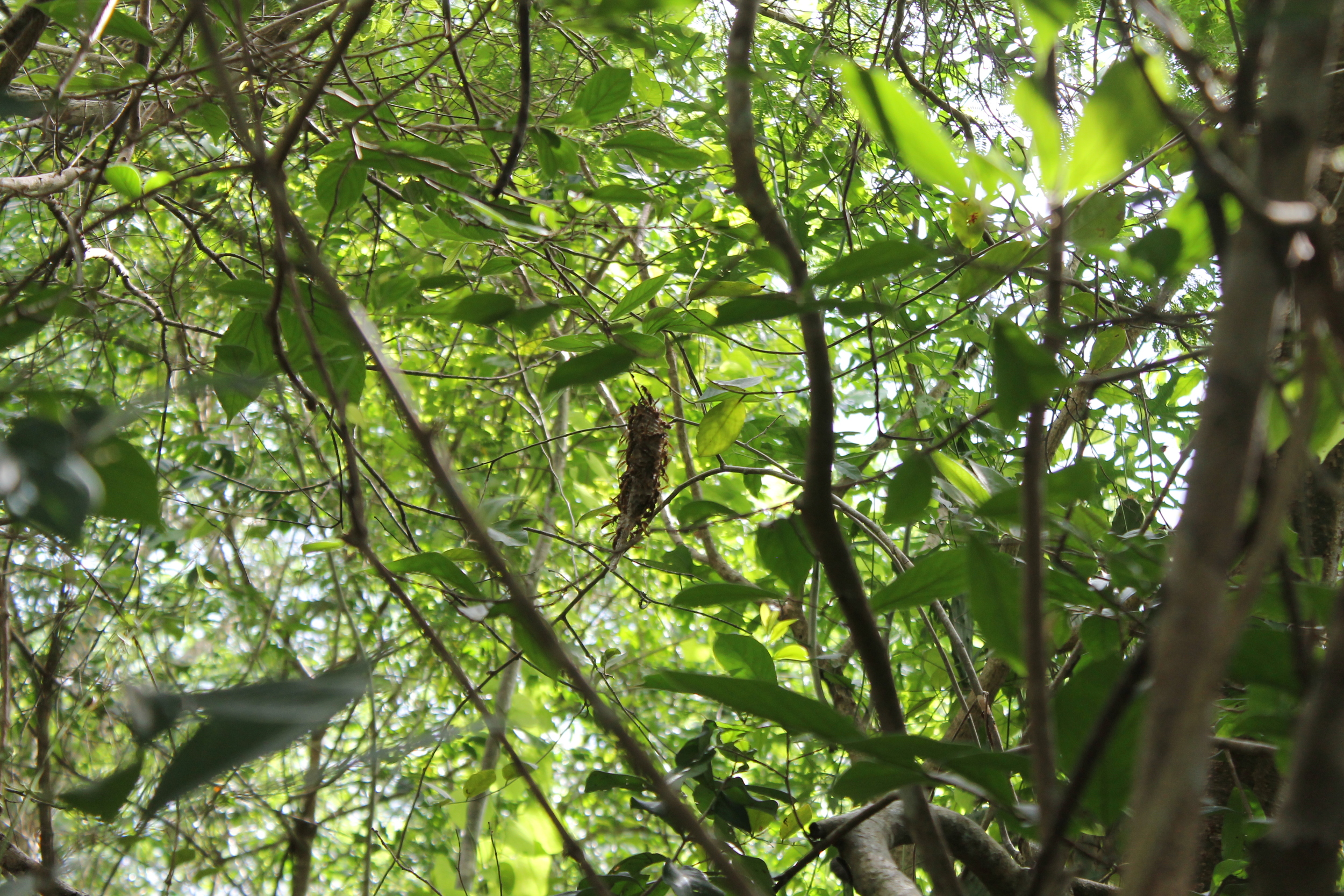…wild lunch in Akil Yucatan…
Chacmultun: the last site on the Puuc Route
At the southern end of the Puuc route, which begins in Uxmal and extends through Kabah, Labna, Sayil and other less-known and some completely unrestored settlements still hiding in the jungle, there sits Chacmultun. Chacmultun means hill of red rock, which is the original name its discoverers gave it as the stone quarries in the region produce red limestone, as opposed to the whiter version in the northern part of the Yucatan peninsula. In fact, many Mayan sites are known by names that probably have nothing to do with their original names; given that there is no text to consult, no stellae to interpret, no record at all. That big hill in Coba? We’ll just call it Nohoch Mul. Big Hill. OK.
Back to Chacmultun. This site is a collection of three or four settlements, with Puuc-style temples and mounds, clustered around a small, fertile valley filled with rich red earth which would have been the agricultural production center at the time (it still is used for farming now).
You will see partially restored buildings complete with friezes, cornices and decorative elements, some of which are cracked, others still intact. You can visit and clamber around most of the site, and will notice some very lame efforts by the INAH to “preserve” some of what is there. Some of the restoration is also quite miserable, the chultun in the main part of Chacmultun proper being a prime example (see photo). In one of the buildings there are paintings on the wall and to preserve them the specialists at INAH have simply plastered over them. To protect stellae on the ground, depicting hieroglyphs and carvings, they have been flipped over so the sun and rain don’t erode them. Very high tech. Parts of the structures have crumbled into ruinous but very recognizable chunks, which would not be that difficult to restore, if there were some will on the part of the folks in charge.
The view from one of the areas visited - Xet Pol I believe - a long walk on a small road through the fertile field and up a small hill, is truly stunning. You feel you can see to the end of the world from there, and the breeze under a shady tree is a most welcome sensation.
The site is stunning and highly recommended if you have any interest in the history of the Mayans in this area. My guide said that the area was populated from the year 300 BC to just before the Spanish arrived at the end of the 1400’s and commercially was important as much of the paper and exotic bird feathers came from the area.
Take a Guide and take Water on Ice
You can hire a guide locally (none at the site, check in Tekax tourism office) and you will get so much more out of the experience than if you go alone. Once at the site, note that you will be required to pay an entry fee of about 50 pesos per person and that there is NO water of any kind for visitors, which included bathroom facilities. None. So make sure you have taken care of your bathroom needs before getting there. When you finish the tour, be aware there is nothing hydrating available, so have that with you in your ice box in the air conditioned vehicle.
There is a lot of walking and if you go in June, as I did very recently, the 2-3 hour visit under a blazing summer sun which feels relentless will make your head explode. That cooler with water, Gatorade or similar and plenty of ice, a vehicle with air conditioning; these will make the trip a far better experience and possibly save you from getting heat stroke.
Lawson’s Original Yucatan Excursions can design a custom and private excursion to the area, which I suggest should be a two day trip with an overnight in Tekax. This way you can enjoy the site on one day, relax in the evening and enjoy the town of Tekax, and the next day hit some caves before returning to Merida. Contact us at lawsonsyucatan@gmail.com for more info or to book this trip.
Photos
Art Galleries - Special Merida Tour
Besides all the usual suspects - ruins, haciendas and cenotes - that visitors to the area love to experience, there is a thriving artistic community in Merida comprised of both locals and newcomers to the area. One very special tour can be arranged to see some of these galleries and meet the artists who create pieces ranging from paint to sculpture and beyond.
On this day, which lasted about 12 hours or so, we visited artisans in their homes and galleries, had some great food in spectacular settings and even threw in a home viewing or two. A great day out with two local experts who I shall call Lucinda and Shirley, who are extremely knowledgeable both about art and where to find it in Merida.
An architectural masterpiece in Merida; yes, it's for sale.
The first stop on the tour was a magnificent home, now on the Merida market. A true oasis from the noise and heat outside. The attention to detail and each carefully planned square meter of this home make it really worth a visit. And if you like it enough, you can even buy it and make it your new Merida pied a terre.
After the house tour, a look at some galleries! Some of these you would never know about, as they hide behind an unremarkable and unmarked door on a hot Merida side street, while others stand out boldly, welcoming one and all to peruse their interiors.
Of course, we had to have lunch at some point. Here, the Hacienda Santa Cruz on the outskirts of Merida. Great food, fabulous place.
Magical Mystery Tour 4 - Homun Adventure
The fourth Magical Mystery Tour took place this week, and the destination turned out to be Homun, an area that is like a piece of swiss cheese: full of caves, cenotes, as well as a whole lot of history dating back to Mayan times and then the colonial era as well.
For those unfamiliar with the Magical Mystery Tour concept, in a nutshell it's this: you sign up for a tour which is practically free - you share in cost of gas and any tolls (vehicle rental if there a whole bunch of people) but you have no say on where the tour goes. These tours are designed to explore potential destinations for more formal tours in the future and may involve birding, photography, cave crawling, hacienda exploring, food tasting, cenote dunking and whatever else occurs to me. You have the option of participating in everything or nothing, but once you are along, you're along for the day! No whining, no special requests and a sense of adventure is a must.
On this tour, Angel (the internationally renowned Lawson's guide) and Jose Luis (professional driver and all-around go-to guy) were on the tour to Homun, to check out an hacienda and other attractions on a large property on the outskirts of Homun, way off in the Mayan jungle. This was not off the beaten path, there was no path.
First stop, after Starbucks, was breakfast in the town of Tahmek, just off the Merida-Cancun highway. Poc Chuc sandwiches amidst villagers and colorful chickens. Across the street, a very unusually named kindergarten.
A few minutes later, we were on a back road, leading out of Homun into the forest. As often happens, there is a bit of garbage along the side of this road, and while it looks disgusting, it did give us an opportunity to see and photograph the largest flock of turkey vultures I had ever seen.
After some time, we arrived at this former cattle ranch, which saw a little of the henequen action but is not at all built up in the sumptuous way some of the over-the-top haciendas are. The building itself is very modest, but it sits on top of a cenote. Note the giant arch over the cenote, holding up the hacienda building. In the forest, falling to pieces, are more buildings. There is cow poop everywhere so you have to watch your step!
After checking out the hacienda and grounds, we walked about 25 minutes into the jungle to check out an opening in the ground which was really a cave. Inside, enormous rock formations, strange little critters and shards of pottery probably dating back to the Mayans, who used these cool underground spaces for both ceremonies and burial purposes. There was indeed evidence of Mayan actitvity in this cave.
After the caving, it was time to get into the underbrush and check out something else that is on this property: a Mayan ruin and a dry cenote. There are no more carved stones of any kind on the largish building structure, and there is a nearby Mayan graveyard that used to have stone tablets, all of which are now gone; stolen apparently. In the dry cenote, evidence of a Mayan garden, including a raised platform with earth and a cacao tree, which the Mayans cultivated back in the day. Also the skeleton of some poor cow that got too close and slipped into the hole and died there.
The day was a resounding success. Cenote, cave, Mayan ruin and cow poop. What more could you ask for? Muddy and dirty, we returned to Merida with yet another Yucatan adventure under our belts and Magical Mystery Tour #4 complete. Stay tuned on Facebook (Lawson's Original Yucatan Excursions) for the next outing.
